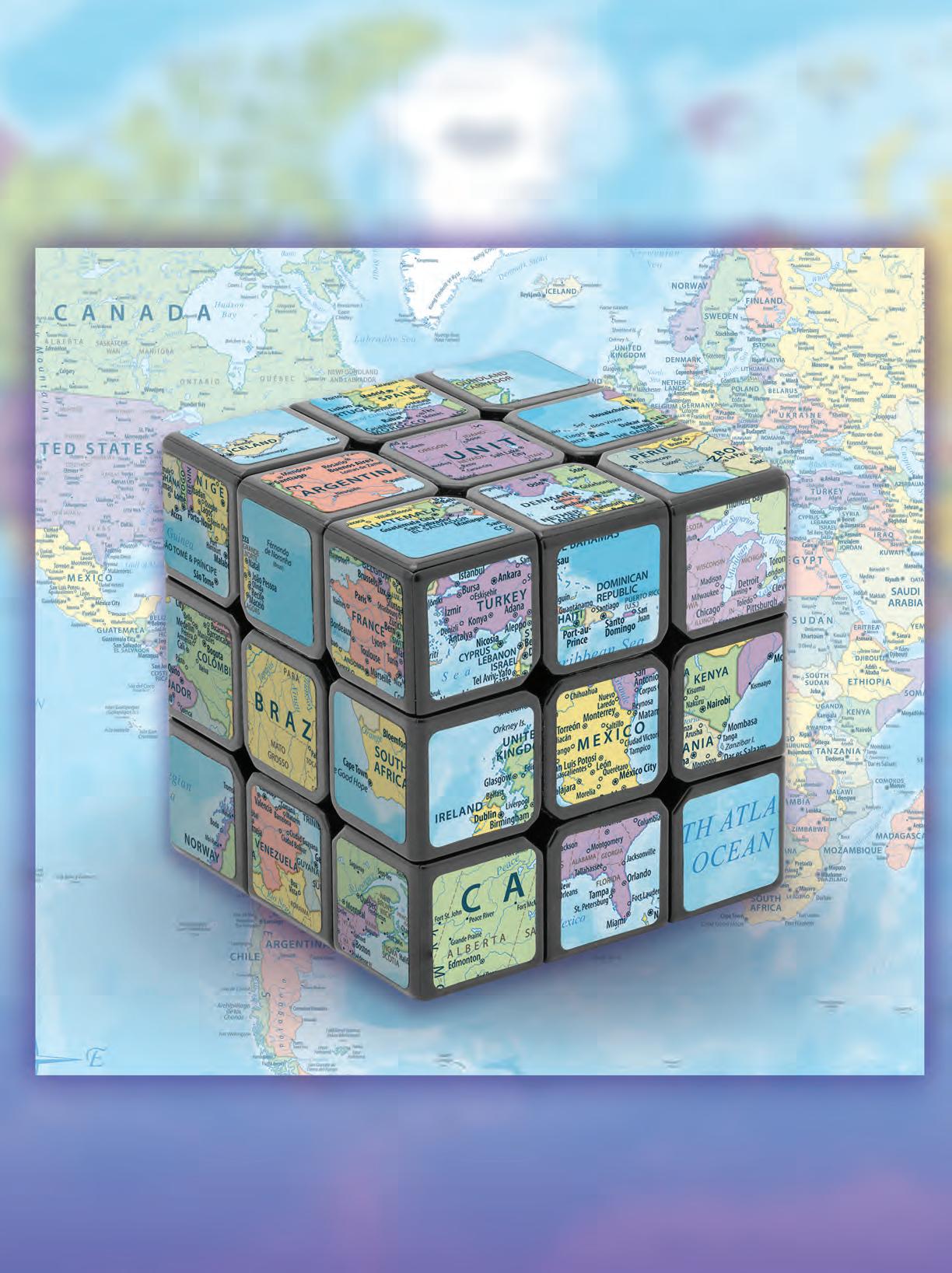
March 5-8, 2026




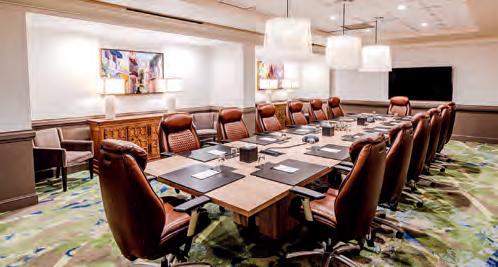

Wyndham Grand Rio Mar
Rainforest | Beach | Golf Resort | Río Grande, Puerto Rico








































March 5-8, 2026






Wyndham Grand Rio Mar
Rainforest | Beach | Golf Resort | Río Grande, Puerto Rico





































































For over six decades, our customers have relied on us as their trusted source for wire and strip solutions. At Gibbs Interwire, we’re consistently investing in our equipment, products, processes, and people to meet the needs of our customers, now and in the future.







of Springs: From the Vault
Do I Grow My Business?
Customer
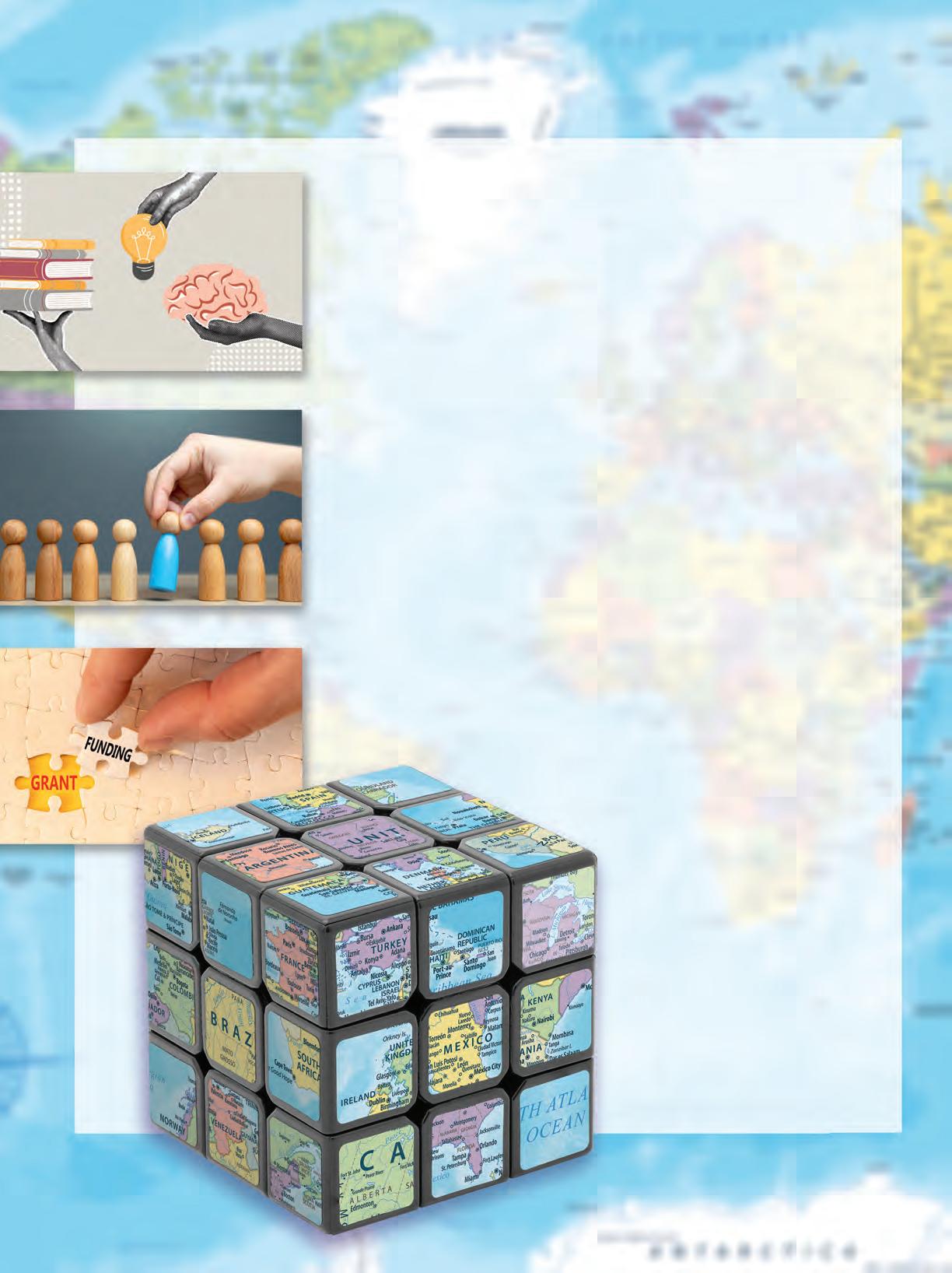
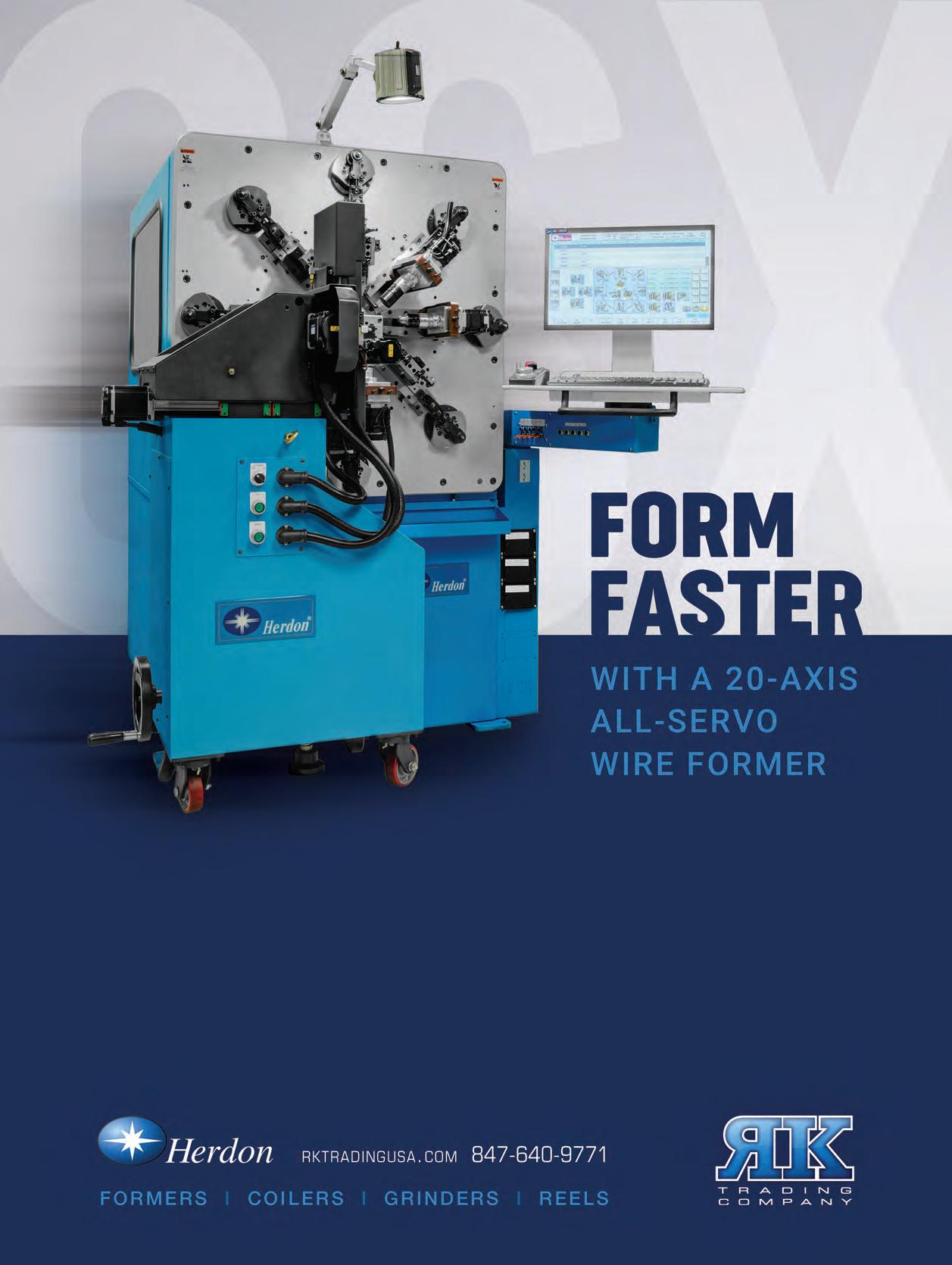
RK Trading’s CSX series of Herdon formers keeps your operation running smoothly. This technology offers a high-speed 20-Axis All-Servo Wire Former that supports multiple servo spinners, the 4-axis AT system and the EA attachment. With a next-generation processor and larger touch-screen monitor, this enhanced operating system provides increased versatility and faster production speeds so you can make more parts complete in less time.
Give us a call today to get up and running with a 20-Axis All-Servo Wire Former from Herdon. SCAN HERE
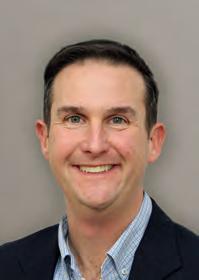
In the late 19th and early 20th centuries, the heart of American springmaking pulsed in two regions: New England and Chicago. New England’s manufacturing belt drew skilled artisans from Germany, Switzerland and Italy, many of them trained in the exacting trades of watchmaking and gunsmithing. Factories in Hartford, Worcester and Springfield advertised for “experienced spring hands” and “wire workers,” often relying on local immigrant enclaves to fill orders. Company managers knew that precision coiling, tempering and finishing were skills passed within families and ethnic networks. Chicago, meanwhile, became a magnet for Eastern European immigrants — Polish, Bohemian and Slovak machinists—who staffed the growing carriage, mattress and machinery plants of the Midwest. Employers often worked directly through community halls and immigrant newspapers, recruiting entire shifts through word-ofmouth. These shop floors were multilingual spaces where newcomers not only found work but also transmitted craft traditions across generations.
Today, the pattern continues. While automation has transformed production, immigrant workers remain central—now hailing from Latin America, South Asia and East Africa. In New England tool shops or Chicago’s industrial suburbs, they join family-owned spring businesses descended from earlier immigrant founders. Springmaking has always been an industry wound together by migration.
The “immigration puzzle” in springmaking is not about controversy but continuity. A specialized craft, transplanted through migration, helped American industry leap forward and still sustains it today.
“Everywhere immigrants have enriched and strengthened the fabric of American life.”
— John F. Kennedy
Don Jacobson III Newcomb Spring Corp.
D3@newcombspring.com
Contact Us
Spring Manufacturers Institute
PO Box 5668
Elgin IL 60121
Main phone z 847-450-6848
Gary McCoy z 847-450-6240
Gaby Carrasco z 847-857-6432
SMI Executive Committee
President: Don Jacobson III, Newcomb Spring
Vice President: David DeVoe, John Evans’ Sons
Secretary/Treasurer: Dave Deerwester, The Yost Superior Co.
Past President: Gene Huber Jr., Winamac Coil Spring
At-Large: Joe Devany, Betts Company
Executive Director: Gary McCoy, SMI
SMI Board of Directors
Julie Arenz, R&L Spring/Medicoil I Markus Arnold, WAFIOS I Tim Bianco, Iowa Spring I Jodi Boldenow, IDC Spring I Adam Jacobson, FENN/Torin I Chris Kozka, MW Components I Don Lyons, JonSpring I Alex Melnikow, Midstate Spring I Keith Porter Jr., Newcomb Spring I Sanjeev Rivera, Lee Spring I Timo Roeger, Kern-Liebers USA I Monica Shaffer, Novi Spring I Jason Sicotte, Associated Spring I Bernie Taylor, Hoosier Spring I Tim Zwit, Motion Dynamics Corporation
Springs Magazine Staff
Gary McCoy, Executive Director/Publisher, gary@smihq.org
Phil Sasso, Managing Editor, phil@smihq.org
Gaby Carrasco, Associate Editor, gaby@smihq.org
Lisa Plefka Haskin, Art Director, lisahaskin95@gmail.com
Communications Committee
Chair, Keith Porter Jr., Newcomb Spring I Reb Banas, Stanley Spring & Stamping I Hale Foote, Scandic Springs, Inc. I Patrick Gillum, Gilco Spring of Florida, Inc. I Adam Jacobson, FENN/Torin I Lucas Karabin, Acme Monaco I Gary McCoy, SMI I Phil Sasso, SMI I Michael Shapiro, Gibraltar Corporation I Bill Wynn, Gardner Spring, Inc.
Advertising Sales I Japan
Ken Myohdai, Sakura International Inc.
Head Office: 3F,4F, ENDO Sakaisuji Bldg., 1-7-3, Bingomachi, Chuo-Ku, Osaka 541-0051, Japan
Phone: 81-6-6624-3601 I Fax: 81-6-6624-3602
Tokyo Global Office: 5F Kamei No. 2 Bldg., 2-17-13, Kiba, Koto-Ku, Tokyo, 135-0042, Japan Phone: 81-3-5646-1160 I Fax: 81-3-5646-1161
E-mail: info@sakurain.co.jp
Advertising Sales I Taiwan
Charlie Yu, Worldwide Services Co. Ltd. 11F-B, No 540, Sec. 1, Wen Hsin Rd. Taichung, 408 Taiwan Phone: +886-4-2325-1784 I Fax: +886-4-2325-2967
E-mail: marketing@acw.com.tw
Springs (ISSN 0584-9667) is published quarterly by SMI Business Corp., a subsidiary of the Spring Manufacturers Institute: PO Box 5668, Elgin IL 60121 Phone: 847-450-6848; Website: smihq.org
Address all correspondence and editorial materials to this address.
The editors and publishers of Springs disclaim all warranties, express or implied, with respect to advertising and editorial content, and with respect to all manufacturing errors, defects or omissions made in connection with advertising or editorial material submitted for publication.
The editors and publishers of Springs disclaim all liability for special or consequential damages resulting from errors, defects or omissions in the manufacturing of this publication, any submission of advertising, editorial or other material for publication in Springs shall constitute an agreement with and acceptance of such limited liability.
The editors and publishers of Springs assume no responsibility for the opinions or facts in signed articles, except to the extent of expressing the view, by the fact of publication, that the subject treated is one which merits attention.
Do not reproduce without written permission.
Cover designed by Lisa Plefka Haskin utilizing Shutterstock imagery.
Please archive or recycle this magazine.
Springs archives: smihq.org/springs-magazine
Join us on social media!



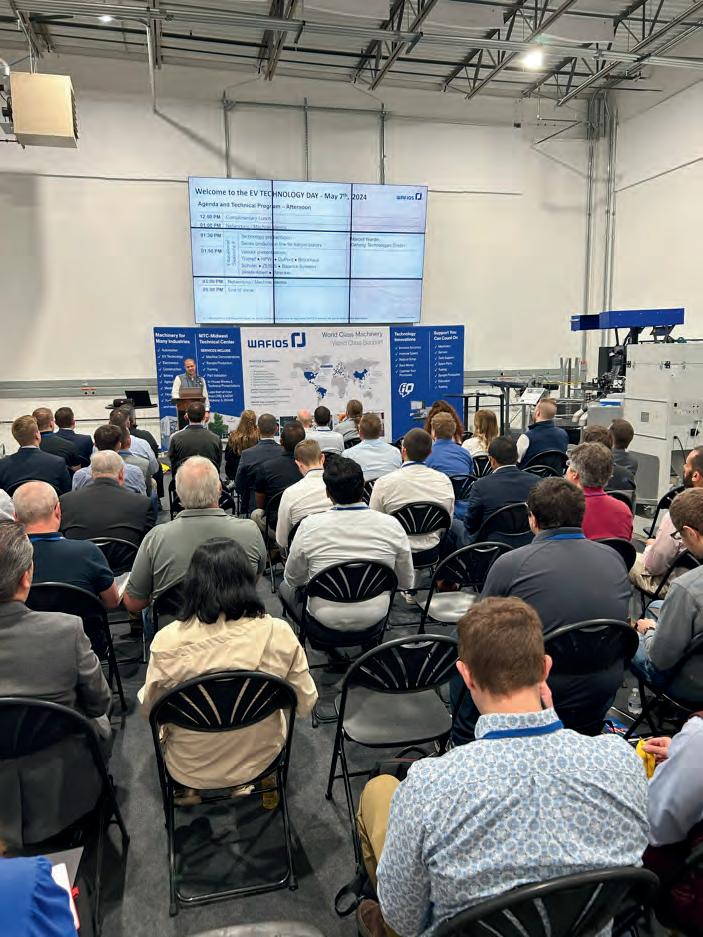






Stanley Spring and Stamping has acquired Hudson Tool & Die Company, a Franklin Park, Illinois–based manufacturer of metal stampings, wireforms and assemblies.
Founded in 1952 by Werner Eric Hellwig, Hudson Tool has remained a family-led business for more than 70 years, most recently under the leadership of Linda Hellwig Salerno. The company has maintained a long-standing relationship with Stanley Spring and the acquisition ensures continuity for Hudson’s experienced workforce and customer base.
Stanley Spring president Reb Banas noted that Hudson’s capabilities in heavy wireforming and metal stamping complement Stanley Spring’s operations and align with its emphasis on quality, service and timely delivery.
Hudson Tool customers will transition to production at Stanley Spring’s 85,000-square-foot Chicago facility. The acquisition is Stanley Spring’s fourth since 2021, following Precision Forming & Stamping, KBWF-Kerr-Buffalo Wire Forming Company and RICH Industries.

MW Components has appointed Thomas A. Amato chairman and CEO. He succeeds Simon Newman, who has stepped down.
Amato will work with MW’s leadership team and American Securities, its private equity owner, to build the company’s growth and oversee its portfolio of brands and products.
Most recently, Amato was president and CEO of TriMas Corporation, where he guided the company’s transformation into an aerospace and packaging business. He was previously CEO of Metaldyne, LLC, and later co-president of Metaldyne Performance Group, which was taken public in 2014 and sold to American Axle in 2017. He also serves as a director at AMETEK, where he chairs the compensation committee.
Rotor Clip received the 2025 Supplier Excellence Award from Caterpillar, marking consecutive years of recognition for consistently exceeding performance and reliability. The award highlights Rotor Clip’s role as a trusted supplier and manufacturer of retaining rings, wave springs and hose clamps used across Caterpillar’s equipment and global manufacturing operations. The award is given to suppliers who meet or exceed Caterpillar’s expectations across key areas of supply chain performance.
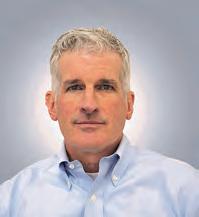

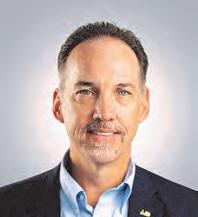
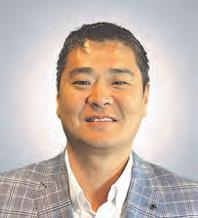
The L.S. Starrett Company, a global manufacturer of precision measuring tools, gages and metrology systems, has announced four key executive appointments at its Athol, Massachusetts headquarters.
Roger N. Amrol, Jr. was named president and chief executive officer, succeeding Douglas A. Starrett, who retired after a 48-year career with the company. Amrol brings more than two decades of leadership experience from Robert Bosch Tool Corporation and Techtronics Industries
Barry D. Laughlin joined as chief operating officer, with more than 35 years in manufacturing operations, including senior roles at Group DEKKO, Caterpillar and Navistar
Allen E. Look was appointed global chief information officer, contributing more than 25 years of IT leadership, cybersecurity and data analysis expertise.
Jon-Michael Raymond has assumed the role of chief revenue officer, bringing extensive experience in sales and marketing across the industrial sector, including prior leadership positions at Starrett and other global manufacturers.
FENN Torin marked its 125th anniversary by hosting an educational tour and celebration with The Wire Association International’s New England Chapter Oct. 9, 2025. The program was held at FENN Torin’s facility in East Berlin, Connecticut, with a tour showcasing forming machinery and advancements in rolling and swaging. It was followed by a networking reception. Proceeds went to support the WAI’s New England Chapter scholarship fund.
CGR International has acquired Industrial Spring Corporation (ISC), a North Kansas City–based manufacturer of precision spring components. The acquisition marks CGR’s first U.S. operation and expands its international presence.
Founded more than 55 years ago, ISC supplies springs to sectors including agriculture, industrial machinery, automotive, consumer products and medical devices.
According to CGR CEO Alexis Martel, the acquisition strengthens the company’s ability to serve North American clients and pursue new opportunities across multiple industries. ISC CEO Phil Jones noted that the partnership supports ISC’s long-term continuity while maintaining its local identity.
CGR plans to build on ISC’s established reputation while introducing additional technologies such as mechatronics and cold forming, with potential applications in U.S. markets including medical, automotive and aerospace.
From April 13–17, 2026, the global wire, cable, tube and pipe industries will gather in Düsseldorf, Germany, for wire and Tube 2026, the world’s leading trade fairs for these sectors. With 2,700 exhibitors from 65 countries spread across more than 1,290,000 square feet, the event is a major international platform for innovation and industrial technologies of the future.
The wire exhibition will span Halls 9 to 17, showcasing wire, cables, products and technologies, including the new “World of Cables” in Hall 13. Special areas will highlight Chinese innovations, fastening technology, springs and mesh welding machines with live demonstrations.
Key themes for 2026 include stainless steel and special materials, hydrogen technologies, e-mobility, fiber optics, fastening and joining technology, spring manufacturing and more. The program also features expert forums, a hydrogen and e-mobility congress and digital ecoMetals trails spotlighting sustainable exhibitors.
For further information, contact Messe Düsseldorf North America at 312-781-5180, email info@mdna.com or visit www.wire-tradefair.com, www.tube-tradefair.com and www.mdna.com.
The Japan Society of Spring Engineers (JSSE) held its semiannual lecture meeting, poster session and general meeting on June 3, 2025, at Meiji University in Tokyo.
The program included seven technical lectures, a report on “Selecting Spring Technological Heritage” and a special lecture on the role of generative AI in operational efficiency. Topics ranged from machine learning applications for spring steels to advanced testing methods for ultra-fine materials and space mechanisms.
A poster session featured seven research projects, with first place awarded to fatigue strength evaluation of spring steel under combined bending and torsion, by Masafumi Morimoto of NHK Spring Co., Ltd. et al.
Following the meeting, JSSE held its annual general meeting and a reception attended by 83 participants. Remarks were given by leaders from JSSE, academia and the Japan Spring Manufacturers Association, with the event concluding in traditional fashion with an “Icchou Jime” single clap.
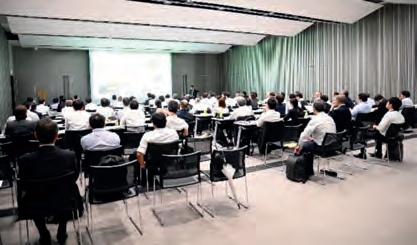
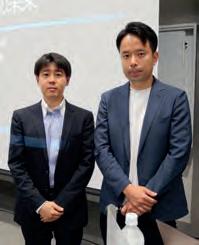
On July 16, 2025, the Indian Spring Manufacturers Association (ISMA) hosted a webinar to showcase SMI’s activities, spring design software and a snapshot of the North American spring industry to ISMA members and spring industry professionals worldwide.
The event drew 62 participants. SMI President Don Jacobson III led the presentation with the support of SMI Executive Director Gary McCoy
The webinar opened doors for North American spring manufacturers to partner with their Indian counterparts and explore new opportunities for importing and exporting raw materials and finished goods. Indian companies also showed a strong interest in SMI’s ASD7 software solution.
This kickoff of a potential long-term collaboration between SMI and ISMA promises to strengthen business ties between the two countries. The timing capitalizes on India’s booming economy and projected growth across all sectors over the next several years.
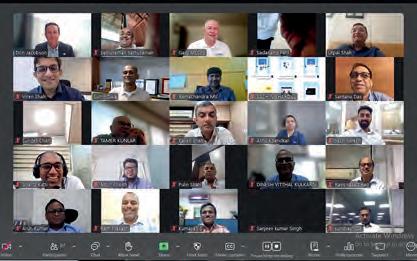
North American and Indian companies interested in exploring partnerships can reach out to ISMA at info@ismaworld.com. z
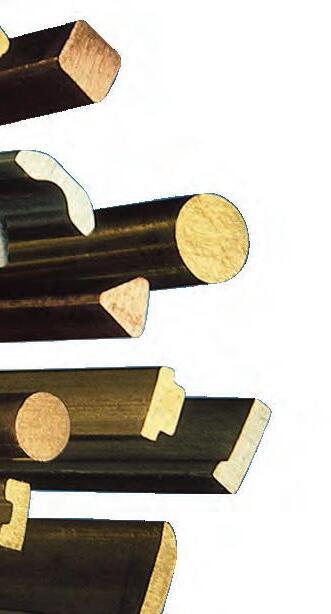


The next SpringWorld Expo and Symposium will take place Oct. 7-9, 2026, at the Donald E. Stephens Convention Center in Rosemont, Illinois. SpringWorld is renowned for bringing together spring-related business professionals, with attendees and exhibitors from around the world. Details will be posted on the CASMI website as they become available.
Want to exhibit at SpringWorld 2026? Email Sydney Harris at s.harris@casmi-springworld.org or call the CASMI office at 414-908-4963.
For 2025, CASMI has awarded eight $2,500 undergraduate scholarships and one $5,000 postgraduate scholarship to dependents of CASMI member company employees. This year’s awards bring the total value of scholarships awarded through the CASMI Scholarship Program to $987,749 since its inception in 1989.
The CASMI Scholarship Program is administered by Scholarship America, a nationally recognized not-for-profit foundation. Their independent management of the processes ensures an objective and equitable system for all applicants.
These scholarships are made possible through the continued support of CASMI members and SpringWorld exhibitors, whose contributions directly support the educational journeys of these remarkable students and their families.
We extend a special thank you to Rosemont Exposition Services, whose generous support partially funded the postgraduate award again this year.

Visit the CASMI website for details on the 2025 recipients. If you’re interested in donating to the 2026 Scholarship Program, contact CASMI at info@casmispringworld.org.

The 2025 CASMI Golf Outing was not only a day of friendly competition and connection, but it was also a day of meaningful impact. Thanks to the incredible generosity of our members, sponsors and participants, we raised $565 in support of The American Cancer Society.
For more about CASMI, visit www.casmi-springworld.org.
Illinois
Events are subject to change. Visit www.casmi-springworld.org for the latest information.
By David DeVoe, John Evans’ Sons, NESMA President
The New England Spring and Metalstamping Association (NESMA) continues to advance its mission of supporting and promoting the region’s springmaking and metalforming industry. Through advocacy, technical training and networking initiatives, the association provides members with resources to strengthen operations, expand professional connections and remain competitive in a global marketplace.
WAFIOS presented its Spring End Grinding Training Sept. 23 in Branford, Connecticut. The course provided a practical, live demo of grinding processes.

In June, NESMA’s Future Leaders in Manufacturing (FLM) committee hosted an axe-throwing networking activity at Montana Nights in Southington, Connecticut. The event brought together industry professionals for an evening of friendly competition, engaging conversation and fun. Sponsored by Plymouth Spring and Rowley Spring, the program exemplified FLM’s mission: “To empower members to achieve their full potential by fostering a collaborative and innovative environment where every participant feels valued and supported.” Through such initiatives, FLM contributes to the development of the next generation of manufacturing leaders.
The NESMA annual golf outing in August was a sell-out. This year’s outing was held at the Country Club of Farmington. Foursomes enjoyed a full day on the course, combining the spirit of friendly rivalry with the opportunity to strengthen professional relationships.
The event concluded with an evening program. Attendees gathered for cocktails, dinner and a raffle drawing.

NESMA will host its Holiday Party on Dec. 4 and Annual Meeting on Dec. 5, 2025 at the Farmington Country Club.This year-end celebration and business meeting brings members together to review accomplishments, discuss upcoming initiatives and connect with others in the community.
NESMA delivers significant value to members, including state and national lobbying, technical seminars and networking events. The association plays a vital role in ensuring the continued success and competitiveness of New England’s spring and metalstamping sector.
For more about NESMA, visit www.nesma-usa.com. z
Dec. 4 NESMA Annual Holiday Party
Farmington Country Club
Farmington, Connecticut
Dec. 5 NESMA Annual Membership Meeting
Farmington Country Club
Farmington, Connecticut
For an updated calendar of NESMA events, visit www.nesma-usa.com.
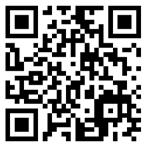

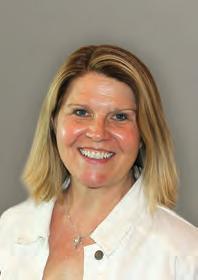
Laura Helmrich-Rhodes, CSP, Ed.D., SHRM-SCP
There is no doubt that immigration is a hot issue. Let’s look at this highly politicized topic from a different yet practical standpoint. Specifically, let’s list the safety implications and, more importantly, let’s consider the OSHA obligations and resources to help bridge the communication gaps in your workplace.
Let’s assume you already have foreignborn workers who speak English as a second language (ESL), not necessarily immigrants, but non-native speakers. According to www.babble.com, in 2022, 18.1% of the U.S. labor force was foreign-born and more than 67 million residents spoke a language other than English at home.
“The Occupational Safety and Health Administration (OSHA) estimates that language barriers are a contributing factor in 25% of job-related accidents,” says Toni Hale in the article “Training in Native Language Makes Workplaces Safer” on www.shrm.org. Furthermore, the National Safety Council magazine, Safety+Health, reported statistics in January 2025 showing a need for better communications to protect Hispanic workers from injury and death.
OSHA has weighed in on this subject years ago under Dr. David Michaels, the Assistant Secretary of Labor for OSHA from 2009 to 2017. He created a letter of interpretation that is a worthwhile read for anyone responsible for employee training. In this letter of interpretation, OSHA requires that nonEnglish speaking employees receive training and instructions “in a language and vocabulary they can understand” (www.smihq.org/go/osha-ltr-2010).
Some of the communication hurdles impacting employee safety are obvious. Some are not immediately evident and are worth addressing. Here are a few:
• Poor or incomplete new employee training in workplace hazards. Most workers don’t realize how dangerous wire and forklifts can be, since most of your new hires have no experience with these kinds of hazards.
Employers are required by OSHA to inform employees of all workplace hazards.
• Supervisors’ inability to answer questions and concerns. Dr. Michael’s letter of interpretation states not just training but work instructions should be in a language employees understand. Ensure supervisors can answer questions about important safety topics like hazardous chemicals in their department, cleanup and first-aid procedures and other safe job procedures, including hot work permits and PPE requirements. They should also be able to take suggestions for improvements from their subordinates.
• Emergency response delays. These can arise from communication issues with an injured ESL speaker or when a non-native speaker needs to report or describe an incident to EMS personnel.
• Using co-workers as interpreters. Explaining technical safety and health topics can create misunderstandings. OSHA requires that information be provided “in their own language by someone with safety experience.” A typical co-worker is not likely to be able to explain the difference between a mutagen and a teratogen or a nitrile glove versus a chemical-resistant glove during hazard communication training. There are technical terms in safety that are not easily translated and can only be done by someone with a large command of synonyms.
• Supporting English language proficiency for employees and their families. Provide small group English-speaking and reading activities called “sheltered immersion.” This is mostly in English and adapted to the student’s skill level. Like full immersion, these events can improve language skills in a comfortable environment. Consider financially supporting language learning apps like Duolingo for employees and their family members, and incentivize improvements in English scores. Encouraging families to practice English at home through fun activities and apps can improve workers’ English skills
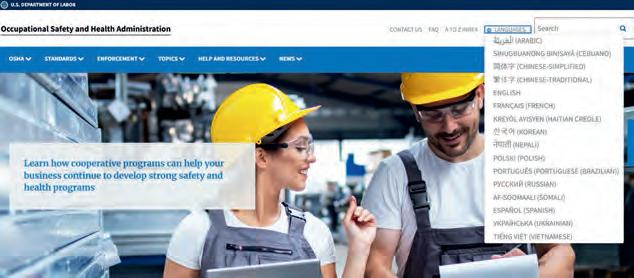
• Form a safety subcommittee of ESL speakers so that they can openly discuss their concerns and offer suggestions for improvement.
• Investigate the use of an on-demand interpreter service. Many hospitals and OSHA use on-demand services to translate important discussions. Companies with ESL employees should investigate and contract those services, so they are ready when needed. Remember, not just safety information needs to be conveyed, but also work instructions.
Let’s look at some more tips on language in the shop:
Laura Helmrich-Rhodes, CSP, Ed.D., SHRM-SCP, is SMI’s regulatory compliance consultant. She is an associate professor in the Safety Sciences Department at Indiana University of Pennsylvania, teaching graduate and undergraduate classes. Contact Rhodes at SMI: 847-450-6848 laurahrhodes@gmail.com. and perhaps even the scholastic/vocational success of their school-age children.
• Never use co-workers as interpreters for safety training or any discussions that involve high risk, such as non-routine tasks, like moving manufacturing equipment or the use of scissor lifts for annual maintenance. Before starting infrequent jobs, plan the work, identify hazards and put controls in place.
• Consider holding separate English and other language environment, health and safety (EHS) training sessions to save time and create a comfortable environment for asking clarifying questions. It takes twice as long for an interpreter to repeat and explain what is said. More importantly, separating the ESL speakers allows them freedom to ask questions without fear of retribution from co-workers.
• Post safety-related signs in the languages of your workforce. It is paramount to continuously communicate hazards and controls in English and your worker’s primary language. Signage helps prove to OSHA you are doing that and sends a message of care and concern to all. These signs and posters should reflect the cultural values of the non-native English speakers.
• All important documents should be in English, as well as the languages represented by your workers. Be certain they are written at a reading level appropriate to your workers, too.
• Use technology to assist. Translation apps and other technology can help, but they are not perfect yet. I used Google Translate in a gift shop while on vacation in Russia years ago. It was OK. We muddled through my questions. My communication course students in safety sciences use Google Translate to create safety handouts for a semester project, but I suspect they may not be entirely accurate. I suggest it as a starting point, but all documents should be closely proofread by an expert proofreader. Many of my friends and associates are surprised to learn that my bilateral Starky brand hearing aids also translate when I set the language using my phone app. I’ve used it to take a question from an Arabicspeaking student, but I couldn’t respond to him since it is one-way only. These are great tech tools in their infancy. I would not want to rely on any of them for life-anddeath discussions.
• Alert consultants, trainers and contractors to your language needs. Don’t surprise them with language barriers when they arrive. The cost of those services can be significant. Failing to prepare safety, hazardous waste, finance, forklift or other trainers before their visit can reduce their impact and not give you your money’s worth. If they can’t communicate with part of your workforce, they can’t fully meet your needs. Many OSHA fact sheets are available in multiple languages, so your safety consultant can come prepared. Furthermore, if you are contracting maintenance help, several safety items need to be communicated and established, such as lockout/ tagout procedures, hazard communication and confined space, to name a few.
There are many paid services for printed EHS materials in other languages. An internet search brings up too many to mention. However, there are some “tried and true” resources — two of which are free!
• Susan B. Harwood federal grants
These grants have funded many OSHA training programs available to the public, including some in other languages. PowerPoints, quizzes, handouts and more. can be found at www.smihq.org/go/hg-language.
• The American Society of Safety Professionals (www.assp.org)
In my professional opinion, this is the best international group of individuals working to protect employees from EHS hazards. They have a Hispanic Safety Professionals specialty group with more than 500 members who create outreach, research and professional development opportunities. They also offer a mentoring program to up-and-coming Hispanic safety professionals.
• The National Institute for Occupational Safety and Health (NIOSH)
Offers downloadable print and video materials. Some may not apply to manufacturing, however, there are many poignant downloadable posters, handouts and other information—all for free.
• The National Safety Council
This is a member organization and one of the oldest dedicated to reducing injuries on and off the job. There are member benefits that include access to materials in English and Spanish.
Cross Cultural Communication
Language barriers in the industrial sector have long been a concern. But supporting workers’ efforts to improve English has been part of our industrial heritage. As a Pittsburgh native (Go Steelers!), there still exist culturally rich, ethnic neighborhoods that originated during the Industrial Revolution.
My family and I have benefited from the cultural richness of our region in the arts, dance, language, customs and, of course, food! The same can happen in your workplace by creating opportunities to share arts, values, customs and recipes to foster a caring and cooperative workplace while supporting efforts to improve ESL efforts. These
activities create an inviting workplace, one where workers want to stay and grow. There has been plenty of research and literature focused on overcoming language barriers to improve productivity, quality, efficiency and reduce employee turnover. Hopefully, this provides a safety-first view of integrating ESL programs to reduce serious incidents. z
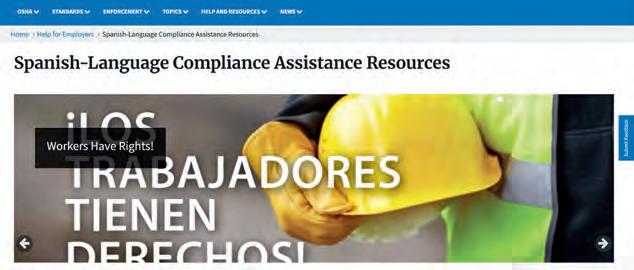
OSHA website of Spanish-language materials www.smihq.org/go/osha-spanish
Susan B. Harwood Grant Safety Training Materials in Other Languages www.smihq.org/go/osha-by-lang
NIOSH downloadable Spanish safety training materials www.smihq.org/go/niosh-spanish
Breaking Language Barriers www.smihq.org/go/lang-barriers
Role of Language in the Workplace www.smihq.org/go/language-role
Precision Matters: 5 Key Considerations for Technical Translations www.smihq.org/go/tech-trans
Babble Workplace Language Barriers www.smihq.org/go/babble-safer
Forbes: How Learning an Additional Language Could Influence Your Business www.smihq.org/go/forbes-language Safety+Health Magazine: Communication on Bilingual Construction Worksites www.smihq.org/go/safety-health
and regulatory compliance audits
for Occupational Safety and Health Administration (OSHA) inspections. Members who participate have experienced fewer lost-time injuries, reduced workers’ compensation costs and avoidance of significant regulatory fines.
In addition to audits, SMI offers in-house safety training sessions and seminars. These can be scheduled in advance to meet specific organizational needs. For details, contact Gaby Carrasco at gaby@smihq.org.



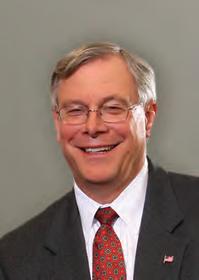
Dan Sebastian
The age-old question is: “Now that I have a spring business, what do I do with it?” Here are some possible options:
• Keep running it the way it is
• Find ways to grow it
• Sell it off
A strong, stable business is a viable option if business threats are minimal, product lines are sustainable, customers are satisfied and your financial position is strong.
For most businesses in the spring industry, all these conditions are seldom met, so the choices are either to grow it or to sell it. That usually means we grow our business to sustain it.
Growth generally comes organically (from within the business) or externally by acquiring a company or licensing unique products or processes.
Organic growth is hard work, but it is at the core of any strong business. It requires you to find new customers by creating aggressive sales and marketing programs and developing new products or processes that open up new markets. Finding new customers can be time-consuming and costly. Developing new products and processes requires research and development investments and can also require additional capital and a significant amount of resource hours.
The way to grow quicker is through acquisition. That will potentially add customers, eliminate competitors and add new products or processes.
Although sometimes difficult, organic growth can be the most rewarding. Why? It brings value to the business that investors like, and it is something that drives employees to succeed. Nothing builds morale more than employees being part of something they contributed to.
Some of the traditional activities that can stimulate growth:
• New products
• New customers
• New markets
• New technologies
• New processes
• Aggressive selling and marketing programs
• Outstanding customer service (things they are unlikely to get elsewhere)
• World-class quality
• Strategic purchasing of materials or services (better pricing or timeliness)
• Geographic relationships (proximity to customer)
• Terms and conditions
• Inventory management (consigned)
In the methods I’ve described to drive organic growth, one of the greatest challenges is to communicate these new opportunities to your sales force. In most spring companies, this can be especially challenging due to the use of manufacturers’ representatives who are not as familiar with your new product offerings as company employees.
Acquiring another company can be a fast way to jump-start growth, but it can be costly and has inherent risk. You can acquire a business to instantly gain new customers and expand your market share. But it is important to understand, to the extent possible, how these new customers will react to your new position.
In a similar fashion, if the acquisition improves your market share, you need to know if customers like the fact that there are fewer suppliers to compete for their business, or if they are going to leverage your increased size to extract price reductions. If the objective of the acquisition is to gain new products, there are other things to consider. Are the processes similar to your current ones or are they significantly different? If the processes are different, who are the key personnel with knowledge of them, and are they going to stay after the acquisition? If
they do not stay, how long will it take for your personnel to acquire a working knowledge?
The most underestimated aspect of acquiring a company is the creation of a common culture that brings the two teams together with a common purpose. New employees can feel like outsiders or second-class citizens, and the acquiring company’s employees may feel threatened. It is like bringing a new baby home — you have to create an environment where everyone feels safe. Failure to establish a common culture can make any acquisition a difficult undertaking.
Acquisitions can create significant opportunities for any business. Opportunities for improved operational efficiencies, greater leverage with material suppliers, increased processing technologies and more management “best practices” can make your company much stronger.
The cost associated with financing an acquisition can be challenging, but when completed, it can and should bring a much stronger company from an economic perspective. Size does matter when working with your bank and investors.
For most businesses, growth is the key to a strong and healthy future. Organic growth is critical to offset the constant changes you face due to ever-present shifts in the economy. Acquisitions can also be useful and provide the impetus for a quantum leap in both revenue and business viability, but with the inherent opportunity also come risks if they are not executed properly. z





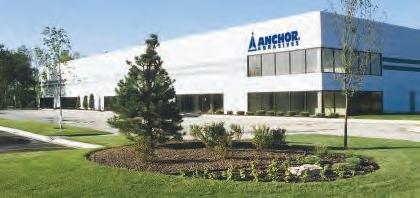
At Anchor Abrasives we specialize in the design and manufacture of resin, epoxy and oxychloride bonded nut inserted discs and cylinders...plus centerless and rollwheels.
At Anchor Abrasives we specialize in the design and manufacture of resin, epoxy and oxychloride bonded nut inserted discs and cylinders...plus centerless and rollwheels. Today, in our modern manufacturing facility, we are ready to continue our tradition of innovative quality products and unmatched customer service. For more information contact Anchor Abrasives Company, 7651 West 185th Street, Tinley Park, IL 60477 U.S.A. Phone: 708-444-4300; Fax: 708-444-1300.
Today, in our modern manufacturing facility, we are ready to continue our tradition of innovative quality products and unmatched customer service. For more information contact Anchor Abrasives Company, 7651 West 185th Street, Tinley Park, IL 60477 U.S.A. Phone: 708-444-4300; Fax: 708-444-1300. www.anchorabrasives.com
At Anchor Abrasives we specialize in the design and manufacture of resin, epoxy and oxychloride bonded nut inserted discs and cylinders...plus centerless and rollwheels. Today, in our modern manufacturing facility, we are ready to continue our tradition of innovative quality products and unmatched customer service. For more information contact Anchor Abrasives Company, 7651 West 185th Street, Tinley Park, IL 60477 U.S.A. Phone: 708-444-4300; Fax: 708-444-1300.
At Anchor Abrasives we specialize in the design and manufacture of resin, epoxy and oxychloride bonded nut inserted discs and cylinders...plus centerless and rollwheels. Today, in our modern manufacturing facility, we are ready to continue our tradition of innovative quality products and unmatched customer service. For more information contact Anchor Abrasives Company, 7651 West 185th Street, Tinley Park, IL 60477 U.S.A. Phone: 708-444-4300; Fax: 708-444-1300.
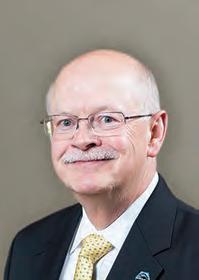
In our quest for continuous improvement, the SMI technical committee developed a satisfaction survey focused on future spring design software needs. SMI members and Universal Technical Systems, Inc. (UTS) users of the Advanced Spring Design (ASD7) software participated in a customer feedback survey. To those who participated, thank you! SMI values your input to shape our future software offerings.
SMI and UTS have partnered on the ASD software since 2002.
Participants were asked to provide input on the current software offerings and ways to improve ASD7 and CalcEdge™ software applications. CalcEdge is a cloud-based platform that enables authors and domain experts using TK Solver1 and Galaxy2 to create and share calculations globally.
Questions were focused on three areas:
1. Product Improvement and Feature Requests — 12 Questions
2. Competitor Insight — 7 Questions
3. CalcEdge Applications — 3 Questions
Some questions required “yes/no” responses, while others requested comments.
Here are key findings from the survey that may interest SMI members and ASD7 software users, along with actions already underway.
A summary of selected findings from respondents is shown below.
Would you be interested in a new ASD for Excel add-in, which allows Excel users to add ASD calculations that will dynamically update in their spreadsheets as inputs are changed?
74% replied “yes.”
Status: UTS has already moved forward to create the ASD for Excel add-in, which some clients are currently using on a limited basis.
Why is this important? Some users require additional calculations beyond the scope of typical spring design criteria. The Excel add-in allows those users to do all of the calculations in one place.
Would you find value in a cloud-based version of ASD, accessed via a browser interface on smartphones, laptops or desktop PCs, with the ability to store and access spring designs online?
63% replied “yes.”
Status: UTS has created an ASD web version of the software. SMI technical committee members are currently evaluating it.
Should shop floor operators have direct access to ASD software for daily use?
64% replied “no.”
Would incorporating inspection reports directly into ASD improve your workflow?
55% replied “no.”
Would it be helpful to include quality documentation capabilities within ASD?
53% replied “yes.”
Would you like the ability to save setup documentation and notes along with each spring design?
66% replied “yes.”
Should SMI be looking to incorporate AI into the Advanced Spring Design software to enhance the spring design process?
57% replied “yes.”
C. Richard (Rick) Gordon is SMI’s technical director. He has more than 50 years’ experience in the steel and wire industries and is available to help SMI members and non-members with metallurgical challenges such as fatigue life, corrosion, material and process related problems. Contact Gordon at 574-514-9367 or c.richard.gordon@ gmail.com.
Have you used spring design software from other providers?
64% replied “no.”
Comment: Some respondents use Microsoft Excel spreadsheets for simple calculations, while others use commercially available spring design software products. Does your company have in-house developed software for spring design? 64% replied “no.”
Do you use any of the CalcEdge apps related to springs?
100% replied “no.”
Comment: On the CalcEdge website, if you type “spring” in the search box, 55 applications are displayed. All registered ASD users can obtain a free subscription to CalcEdge.
SMI appreciates the contributions of SMI members and ASD users who responded to this survey. The SMI technical committee and UTS are reviewing the detailed comments to identify future enhancements to the ASD software. Stay tuned. z
References
1. TK Solver is a comprehensive mathematical modeling and equation solving software tool for engineers (www.uts.com/Products/TKSolver).
2. UTS Galaxy software manages calculationbased knowledge in a client organization (www.uts.com/Products/Galaxy).
Spring Design 202 — Extension Spring Design Training Program Webinar scheduled for Thursday, Nov. 20, 2025, 1–5 p.m. ET on Microsoft Teams. To register for this class or others, go to http://smihq.org/go/tech-classes.
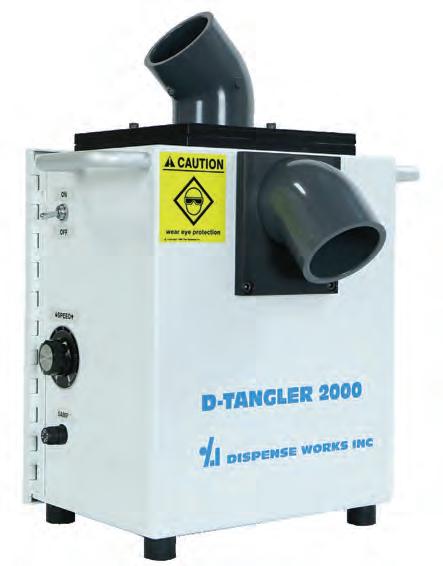
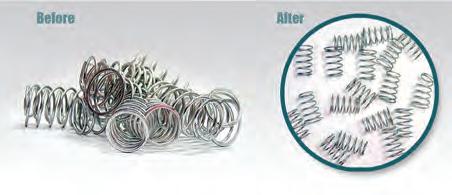


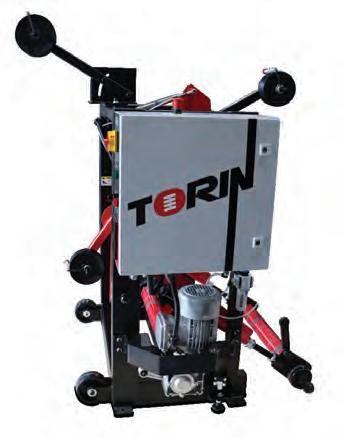
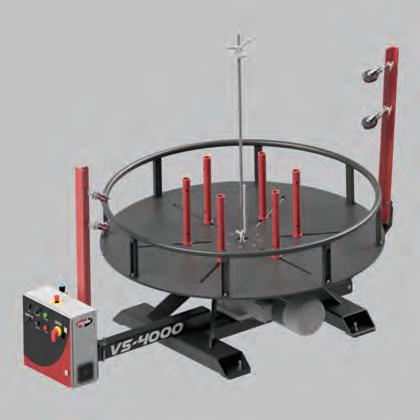

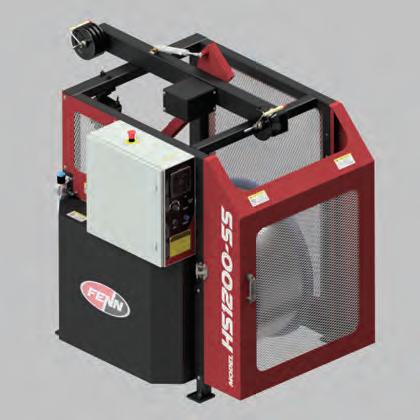
• Configurations to accomodate a wide range of wire sizes & weights
• Ease of use
• Seamless operation with Torin Spring Coilers & other machinery
• Integrated safety features between machines
• End-to-end support and service by FENN Torin certified technicians
can also be custom engineered to your unique requirements.
www.fenn-torin.com sales@fenn-torin.com 860.259.6600
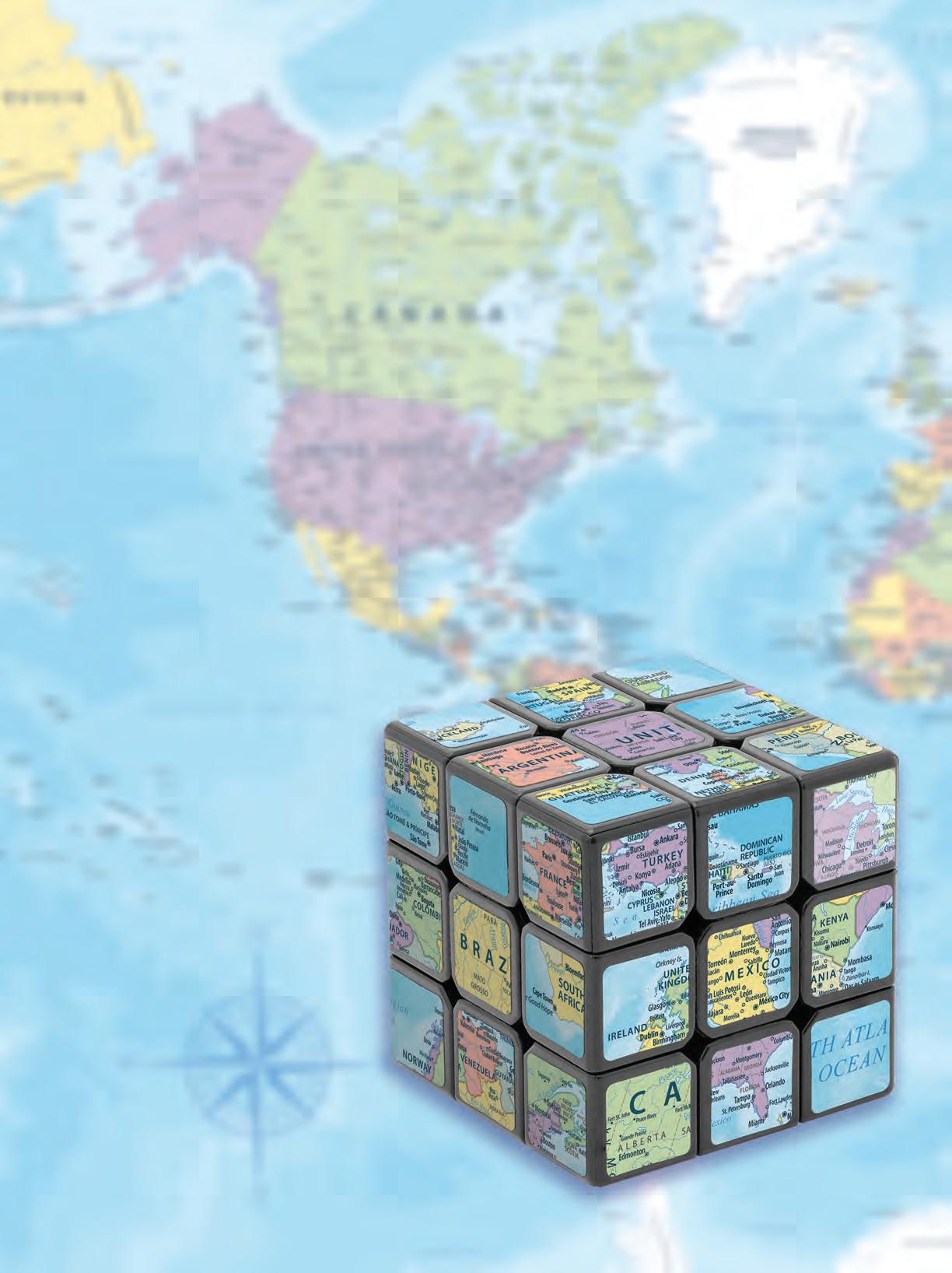
By Phil Sasso
According to the Bureau of Labor Statistics, about one in five American workers was not born in the U.S. There’s a long history of immigrants in manufacturing, from the factory founders to the skilled laborers producing products.
I know firsthand. My dad was a stonemason in Italy before immigrating at 27. His first job in the U.S. was sweeping floors at a metal fabricator, but the owners saw potential in him. They put him through trade school and sponsored his apprenticeship. He went on to build a 35-year career as a journeyman tool and die maker, only retiring when CNC became a required skill.
Ironically, the SMI Communication Committee chose an immigration theme more than a year ago, long before it was making daily headlines. Our goal for this issue is not to be divisive but to focus on common ground, celebrate our immigrant heritage and share resources to help develop the foreign-born workforce.
When you look at two of our industry’s oldest springmakers, John Evans’ Sons and Betts Company, you see the profound influence of immigrants.
In 1847, John Evans, a Welsh blacksmith, came to America. He opened a small back street shop in New Haven, Connecticut, in 1850, which would become John Evans’ Sons. His first products were flat suspension springs for horse-drawn carriages and buggies. “An industrious and visionary man, he personified the entrepreneurial spirit of his time,” reads the company website. “His success was evidenced by his ability to innovate and adapt technology throughout the decades leading up to the 20th century.”
Betts Company was founded in 1868 by English ironworker William Michael Betts, who emigrated to the U.S. He opened the first springmaking shop west of the Mississippi during the post-Civil War Reconstruction era. “With a bold move to San Francisco, young William launched his namesake company that quickly became

known for expertly crafting springs for wagons and buggies of all kinds,” says the Betts website. Today, William Michael “Bill” Betts V, is president. He is the sixth generation of continuous family ownership and management.
“While automation has transformed production, immigrant workers remain central,” writes Don Jacobson III in his President’s Message (p. 4). “In New England tool shops or Chicago’s industrial suburbs, they join family-owned spring businesses descended from earlier immigrant founders.”
Nataliia Markova, a design engineer at Lee Spring in Brooklyn, New York, tells her harrowing tale of uprooting her family in Fleeing Russia, Finding Springs (p. 25). Markova and her husband left successful careers in Moscow to find freedom in the U.S. “It was safe for us to leave for vacation, but a week after we left, they began to put people in prison, and the police came for my husband,” Markova says. “After that, it was a quick decision not to go back.”

In Tapping a Hidden Talent Pipeline (p. 32), Clay Martin challenges springmakers to consider a unique way to import skilled labor—from a U.S. territory. “Because Puerto Ricans are U.S. citizens, no visas or red tape are required. Employers avoid the immigration bureaucracy that complicates international hiring.”
Non-native English speakers can face challenges on many levels. But help is available.
“My biggest obstacle was that I didn’t speak English,” recalls Audra Liaugaudiene, a Lithuanian immigrant in her Women in Springs profile, Think Beyond the Fix (p. 44). “For a few years, I went backward before I started going forward.”
“Some of the communication hurdles impacting employee safety are obvious. Some are not,” says Laura Helmrich-Rhodes, SMI’s regulatory compliance officer, in her Be Aware column (p. 13).
“OSHA requires that information be provided in their own language by someone with safety experience,” explains Rhodes. “A typical co-worker is not likely to be able to explain the difference between … a nitrile glove versus a chemical-resistant glove during hazard communication training.”
Rhodes shares professional tips and resources to provide safety training and information to help meet compliance obligations.
“Increasingly, manufacturers are partnering with community colleges to offer on-site English as a second language (ESL) classes for nonnative speaking employees, often supported by grant dollars.” In my article, Workplace Literacy: Why Manufacturers Pay Employees to Learn English (p. 28), you’ll discover that “A side benefit of these workplace literacy classes is improved employee recruitment, retention and productivity.”
“If leaders want new staff members to stay and reach high levels of productivity, they must be attuned to the culture and ensure intentional onboarding,” says leadership trainer Jennifer Goodrich in Onboarding That Retains People (p. 30). “The goal is to help employees feel welcome, prepared and clear about their role.”
“Leadership plays a crucial role in fostering this sense of purpose and cultivating an environment in which each employee feels appreciated,” writes SMI Executive Director Gary McCoy in his column Every Employee Supports Your Mission (p. 51). Making each employee feel welcome and an integral part of your mission can have a major impact on your retention and morale.
Also in this issue, grant writer Micki Vandeloo discusses Apprenticeship and Internship Grants (p. 34) available for your employees, including immigrant workers. “Apprenticeship programs provide structured, hands-on training that help manufacturers develop a highly skilled workforce while ensuring institutional knowledge is passed on to new employees.”
Springmakers face a skilled labor shortage puzzle. The immigrant workforce may be one of the pieces to solve it. Many immigrant workers bring ambition and a positive attitude. Springmakers can offer them jobs and training.
Hopefully, the stories and resources in this section inspire you to explore new options. Welcoming immigrant talent is not just an industry tradition—it can be good business. z
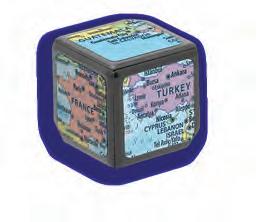
By Phil Sasso
When war broke out in Ukraine in February 2022, Nataliia Markova and her husband, Artem, were concerned. “I told my husband we might need to leave Russia because we had always been against the regime,” Markova says.
“When we were away on holiday in Turkey, the police went to his coffee shop in the center of Moscow looking for him. After that, we realized it was dangerous for us to go back. So, from Turkey, he sold all his coffee shops and our car to have money to move forward.”
“We went on holiday in April and never went back,” she explained. “It was safe for us to leave for vacation, but a week after we left, they began to put people in prison and the police came for my husband. After that, it was a quick decision not to go back.”

The family abruptly left their life in Moscow behind and headed to New York to seek asylum. They may never be able to return to Russia and visit friends or family again unless the political regime changes. Artem liquidated his six coffee shops, and Markova walked away from her job as a manufacturing engineer at a research institute of automation and hydraulics. The company’s main customer was a government defense contractor.
In Russia, Markova had worked as a manufacturing engineer for almost a decade — designing products, overseeing factory processes and preparing documentation. But in the United States, she had to start from scratch.
“For the first year I worked as a housekeeper,” she says of her earliest job in the U.S. In between
cleaning clients, she would use her laptop to complete AutoCAD drawings for her other part-time job. Eventually, she began applying for professional jobs in engineering. The first opportunity didn’t go well. “I received a call from a company in New Jersey,” Markova says. “But I failed the interview because I didn’t prepare. My English was not very good, so I just failed it.”
It was four months before she received another call — this time from Lee Spring.
Markova felt she had to improve her English. The family lived in Brighton Beach, where a Jewish community center offered free English classes. “I attended these classes, but it was not much help because they were older people, and it was a beginning English class. So, my English was better than anyone else in the class,” she says. “I think I really learned English when I started working and speaking with American people.”
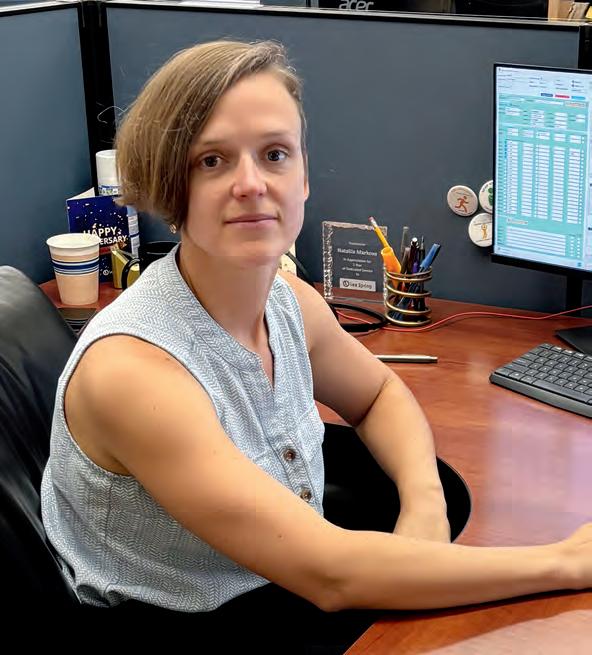
A big breakthrough came when prepping for her Lee Spring interview. She passed the company’s initial screening, completed a technical test and was invited for an in-person interview.
“I was preparing for one week,” she says. “I just went on YouTube and saw what questions they might ask and how I can answer them. So, for one week, I prepared my speaking, learned some words and practiced my answers.”
The preparation paid off when she was hired as a design engineer. The position required engineering, pricing and customer communication. A perfect fit for her as an engineer, but one that stretched her comfort zone.
“For me, the hardest part was not understanding the engineering — that was not difficult for me,” she says. “But the salesperson part, connecting with customers, trying to sell something and calculating prices, this was a little difficult.”
But support was there. “When I first started, my English was not so good,” she admits. “But I could ask questions to other engineers, or my manager, and everyone was very helpful.”
When Markova started at Lee Spring, she knew very little about springs. “We had some springs in our assemblies,” she says of her Russian work. “But I never designed a spring or calculated physical parameters for them.” When she had worked parttime doing AutoCAD for patent drawings, she had noticed some springs in the inventions.
But that didn’t mean she had the technical knowledge. “I didn’t know about the formula for range, spring rate or how to calculate loads or about wireforms and flat springs. So, I learned here,” she says.
She adapted quickly. Supported by co-workers and managers, she asked questions, studied documentation and absorbed everything she could. “They answered my questions and gave me instructions,” she says. “Anytime I wasn’t sure, I asked.”
One early mistake still stands out in her memory. “A customer sent a photo with a ruler, and I thought it was metric,” she says. “But it was inches. I did the whole calculation in millimeters, and it caused a mess.” It was a jarring reminder that even with math — often considered the universal language — things can be lost in translation.
“I started to work as an engineer in my fifth year in university. So, all my career I worked as an engineer,” Markova says. In Russia, her role was firmly rooted in technical design. “We did drawings. We oversaw all factory processes, engineering and documentation.”
“In Russia, I didn’t speak with customers much. It was very strict. I couldn’t discuss anything with them, I just explained and answered questions. It was not a friendly talk,” Markova says. “But here I can call the customer, and the customer can call me and we can discuss everything. So here I feel more freedom — I don’t need to ask permission. In Russia, three or more people needed to check and sign off on my drawings, with the final approval from a military person.”
At Lee Spring, she found herself in a very different job.
“I work as an engineer and salesperson,” she says. “In Russia, I worked just as a design and manufacturing engineer. So, my main goal was to make a product or to complete drawings and documents for a product through the prototype stage.”
“Here I start from design and finish with giving a price to the customer,” Markova explains. “Now I work for another division of Lee Spring, and they gave me more space to deal with more interesting client design requests, calculate prices for customers by myself and speak with customers.”
Markova was often the only woman engineer in Russia. “We’d have four groups of people for a project, and in every group we have around six or eight engineers. And only one or two were women. Most of the women worked in the electronics department, not in the mechanical area where I was.”
Her experience as a woman in engineering in the U.S. has been welcoming. She feels accepted and doesn’t find being a woman makes her job harder. “I felt accepted in Russia, too,” Markova says. “But both in Russia and the U.S., there are not a lot of women in engineering.”
She hopes more girls pursue technical careers. “It’s a job where you need to be very attentive, and there are a lot of small details that you can miss,” she explains. “You need to sit for a very long time on one task.” She believes a woman can do that as well as, or even better than, a man.
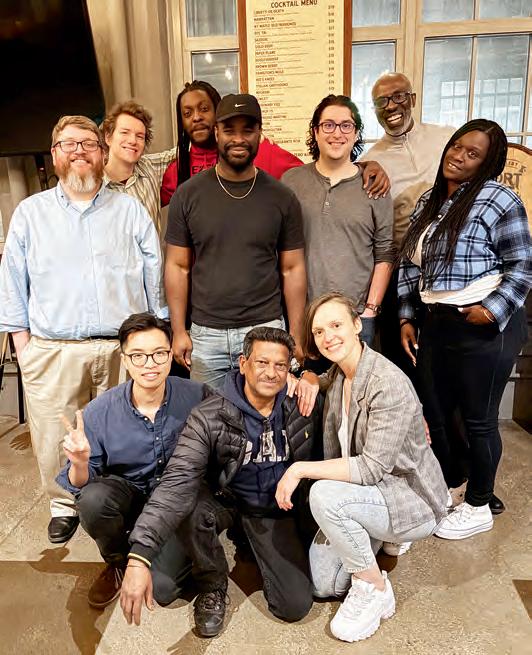
Markova’s daughter, Eva, was just one-and-a-half years old when they arrived in the U.S. “She just spoke a little Russian. But now she speaks, reads and writes in Russian, and she also speaks, reads and writes in English,” she says.
On career day at her daughter’s day care class, Markova shared what she does as an engineer.
“I brought paper and some pencils and asked them to draw a car for a Peppa Pig toy. All of them were very excited,” she laughs. “I was there for an hour, and they were all very busy and very interested.”
“I told them about springs and they started trying to find springs everywhere.”
She doesn’t want to push her daughter, now five years old, in any direction. “If she wants to be an engineer, I will be happy. Right now, she wants to be a teacher, but that could change, too.”
When they left Russia, Nataliia and Artem’s only goal was to give their family a brighter future.
“I didn’t know if I’d be an engineer again,” she says. “I just wanted my family to be safe and my daughter to have choices.” z
By Phil Sasso
Manufacturers are partnering with community colleges to offer on-site English as a second language (ESL) classes for non-native speaking employees, often supported by grant dollars. A side benefit of these workplace literacy classes is improved employee recruitment, retention and productivity.
“The best way to think of it is contextualized English language instruction,” said Adam Schauer, dean for adult and workforce education at Waubonsee Community College. Schauer’s program, based in Aurora, the second-largest city in Illinois, encompasses 22 municipalities and parts of five counties. It serves a large industrial and manufacturing base.
Like many workplace literacy programs, Waubonsee’s team designs courses around each employer’s goals, incorporating industry
terminology, safety procedures, HR policies and company culture into the lessons. They also provide metrics to measure and report success.
Employer costs vary, depending on funding models. Many are free.
“If the employer is able to meet grant requirements, the cost is zero,” Schauer said. Federal Workforce Innovation and Opportunity Act (WIOA) funds, along with state support, make many of these programs possible with no curriculum or course fees.
For companies that do not qualify for grantfunded programs, community colleges can develop employer-paid options customized to the organization’s needs.
Classes aren’t one-off seminars. The preferred cadence is two to three days per week in two-to three-hour blocks. Trying to accomplish too much in one day can be counterproductive. Grant-funded programs generally require five to six hours of weekly instruction over 12 weeks, often embedded into the workday. Generally, employees are released from their workstations and paid their hourly wage to attend classes on-site.
Employer-paid versions can be more flexible, with classes running two or three hours a week, over 10 to 15 weeks.
“The first thing we do is assess all the participating employees utilizing an English language test approved by the federal government,” Schauer said. From there, the college creates a curriculum that blends language development with
workplace-specific content. After about 40 hours of instruction, employees are reassessed and results are shared with the employer.
“We also track employee retention,” Schauer said. “We generally find employees who participate in these programs have a higher retention level than those who do not participate.”
“We have students from 42 different countries speaking 38 different languages,” Schauer said. That diversity requires instructors to adapt lessons to multiple skill levels and literacy backgrounds. The classes are often supported by technology such as the popular BurlingtonEnglish program, a blended, digital English language learning curriculum for adult learners.
There are benefits that extend beyond language proficiency. Classrooms also foster connections across departments and levels.
“We like to see administration and HR visible in these classes, so it breaks down walls a little bit,” Schauer said. “They’re thinking, ‘You know, this is a company that cares about me. They want to see me grow. I’m going to do my best to help them grow.’”
Employers sometimes expand the programs. One manufacturer asked Waubonsee to create a “Spanish for Managers” course to help English-speaking supervisors communicate better with their teams. Another added a leadership-focused ESL track for non-English speaking team leads that focused on business and management language.
The investment has a payoff.
“We’ve had a 98.8% retention rate one year after completion of these classes with our local employers,” Schauer said.
That retention reflects both improved communication and a stronger bond between workers and employers. “Oftentimes they’ve never worked for an employer that would run programs like this,” Schauer said. “They may have been through an employment agency and
they’ve never felt connected to an employer. I think a lot of times they’re shocked and impressed that an employer is looking to provide them with opportunities like this.”
At one company, classes not only improved language skills but also became a recruitment tool. Waubonsee hosted a job fair for students in its community ESL classes and the company hired 14 people from the pool. “The students were like, ‘Wait, I can go to work for your company, make the same if not more money, instead of giving up six hours of my free time to take English language classes?’” Schauer said.
Schauer encourages manufacturers outside his district to contact their nearest community college. “That is essentially what our role is, as we want to be that workforce development partner for our employers,” he said. “Oftentimes they’re able to provide workplace literacy instruction at low to no cost because that’s what we’re designed to do.”
He calls it a “win-win-win” — community colleges fulfill their mission, employers recruit and retain skilled workers and employees gain English listening, speaking, reading and writing skills.
For manufacturers struggling to fill shifts and keep talent, workplace literacy may be one of the most cost-effective investments they can make. z
By Jennifer Goodrich
As leaders, we know that a strong corporate culture drives performance. But did you know culture can also improve employee retention? According to Ernst & Young, 92% of employees said workplace culture directly impacts their willingness to stay in a job.
Workplace culture doesn’t happen by accident — it starts with effective onboarding.
Whether you’re launching a new department or replacing a key employee, how you onboard people can shape their perception of your company, their performance and how long they stay. Onboarding is especially important when onboarding people from different cultural backgrounds and languages.
Your culture is built on the written and unwritten rules that guide your staff’s behaviors. Culture can be built intentionally through careful design or by accident when bad behavior goes unchecked. Your culture might be casual, where even a branded polo shirt and khaki pants feel ‘too corporate,’ or formal, where managers are addressed as Mr. or Ms. Harris. In some workplaces, employees must ask permission before taking risks, while in others they act first and ask forgiveness later. Teams may view themselves as family or as competitors. Regardless of your cultural style, your culture has power! Employees who do not understand your culture can become misfits and unproductive.
Successful organizations often blend different types of culture depending on their goals and the nature of their industry. Clearly defined cultures create cohesive teams. Poorly defined cultures become the undefinable root cause of productivity loss. But even the best-defined culture can become a barrier to productivity and employee retention if your new hires are clueless about what your culture is and why your culture works.
The best onboarding makes every new employee feel welcome.
One of my clients began a new job as vice president of marketing. On her first day, her boss — the company president — was out of town. Her office wasn’t ready, so she sat

in the conference room. Her badge, laptop, business cards and parking pass weren’t prepared either—as evidenced by her car being towed out of the employee parking lot.
In contrast, another client shared a much more positive onboarding experience. Two weeks before her start date, she received her HR paperwork (insurance forms, etc.) and was able to review them with her spouse at her own pace. Along with the forms came a packet outlining her first-week schedule and providing background on the projects she’d be managing or supporting. The packet even included short bios of her new teammates, including their education, tenure, strengths and pet peeves. On her first day, she received company shirts, business cards, a badge, a laptop and her parking pass. She felt welcome and ready to be productive on day one.
According to the Human Capital Institute, most new employees decide whether they’ll stay with a company within their first few weeks. If leaders want new staff members to stay and reach high levels of productivity, they must be attuned to the culture and ensure intentional onboarding. The goal is to help employees feel welcome, prepared and clear about their role.
Before the employee’s first day:
• Send non-confidential documents (insurance forms, etc.)
• Provide an agenda for the first week or two
• Set up their workstation
• Order business cards, uniforms or other materials During the first week:
• Complete any pending HR paperwork
• Introduce the company’s history, current projects and goals
• Introduce them to key people (colleagues, clients, cross-functional partners)
• Ensure technology and workspaces are ready
• Distribute company materials (badges, shirts, cards, etc.)


Hiring globally means access to the best talent—but it also brings added complexity. Some new hires may share a language and culture. Others may have different first languages and cultural backgrounds.
Email can be a powerful tool. It gives employees time to read carefully and respond thoughtfully. Pre-recorded videos, digital onboarding platforms and shared documents can make the process more flexible and accessible.
Language differences can impact how well employees understand expectations and policies. Infographics and illustrated manuals can be particularly effective for communicating physical procedures, especially around safety and operational protocols.
For management-level employees, language may be less of a concern — but cultural nuance can still be an issue.
Translating words like “gift” can mean “present” in English, but “poison” in German. “Oficina” means “office” in Spanish but “workshop” in Portuguese. Would your new vice president of finance like her office to be called a “workshop?”
Non-verbal cues vary across cultures, too. Direct eye contact is common in the U.S. but may be seen as overbearing in Japan. In India, a side-to-side headshake means “yes.” In the Middle East, a thumbs-up gesture can be offensive. In many cultures, touching with the left hand is discouraged. When onboarding someone from a different culture, take the time to learn about differences. Ask questions. A little curiosity goes a long way toward avoiding misunderstandings and building rapport.
Cultural differences also affect holidays, travel and worklife expectations. In India, weddings can span several days and require extended travel. In Mexico, a girl’s 15th birthday (quinceañera) may be as elaborate as a wedding.
Dutch social psychologist Geert Hofstede is known for his groundbreaking research on cross-cultural organizations. He identifies eight cultural dimensions that can affect workplace behavior:
Power distance — How employees view authority and hierarchy
Individualism vs. collectivism — How much employees should focus on personal vs. group goals
Gender egalitarianism — How employees’ view gender roles
Achievement orientation — The extent to which employees are results-driven vs. relationship-driven
Uncertainty avoidance — Employees’ comfort with ambiguity or incomplete info
Long-term orientation — Whether and for how long employees are willing to defer rewards
Assertiveness — Employees comfort level with direct communication
Humane orientation — Employees emphasis on kindness and consideration
Rather than avoiding these differences, embrace them. Ask new hires to share their perspectives, traditions or expectations. Showing interest builds respect—and connection.
Onboarding that welcomes team members builds retention. Show new hires they are valued by preparing their workspace, tools and materials for their first day. Take the time to introduce the company, processes and key people. When employees feel connected, including those from different cultural backgrounds, they’ll engage quickly and be more productive. Embrace every new employee from day one, and you’ll build retention, participation and performance. z
Jennifer Goodrich is president of Benchmark Leadership Training and a faculty member of the University of Tennessee at Chattanooga. She trains on topics including multigenerational workplace, emotional intelligence, customer service, team building, employee development and communication effectiveness. Goodrich has worked for Moen Faucets, Avery-Dennison and Newell-Rubbermaid. She holds a B.A. in economics, an MBA and a Ph.D. in industrial and organizational psychology. Contact her at Jennifer-GoodrichOl@UTC.edu or 423-280-6604.
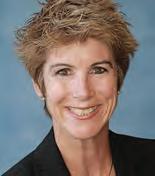
By Clay Martin
As springmakers know, finding reliable, skilled manufacturing workers is a growing challenge. One promising solution for importing skilled workers lies just beyond the mainland, but firmly within U.S. territory: Puerto Rico. These workers are U.S. citizens, many with manufacturing experience, bilingual skills and motivation to relocate.
In 2016, a layoff pushed me to rethink my career. Through my experience with the Peace Corps in Latin America and translating and recruiting for farms and factories in upstate New York, I identified an overlooked opportunity: connecting Puerto Rican workers with mainland employers.
So, I bought a one-way ticket and spent several months driving around the island in my purple Jeep, building trust and creating a recruiting firm. I have since placed thousands of Puerto Rican job seekers in manufacturing, hospitality and healthcare jobs.
This U.S. territory offers advantages over international recruitment. The island’s manufacturing history and ongoing economic struggles make many workers eager to relocate for better opportunities.
Manufacturing has long been central to Puerto Rico’s economy. Pharmaceutical plants, medical device factories, electronics assembly and textiles have provided decades of experience for workers across the island. These industries trained employees in precision
processes, safety compliance and quality control, all of which are directly transferable to mainland operations.
Many Puerto Rican workers are bilingual, comfortable working in both Spanish and English and familiar with U.S. cultural and workplace norms. That combination of technical expertise and adaptability makes them well-suited for mainland employers seeking reliable labor.
Puerto Rico is a beautiful island with a rich culture, yet its economy has struggled for years. In June 2025, the unemployment rate stood at 6.2%, compared to 4.1% on the mainland. Median household income is about $24,000 per year, less than a third of the $74,580 U.S. median. Even skilled workers often earn far less than they would in similar roles on the mainland.
My goal is to provide people with better opportunities, regardless of their background or desired destination. Residents of Puerto Rico share with me their desire for optimal employment opportunities to grow as a professional, provide for their family and have consistent work.
Relocation is rarely an easy decision. Leaving behind family and community is difficult and the transition requires adjusting to new cultural and logistical realities. Still, many Puerto Rican workers make the move because the benefits outweigh the costs.
It’s common for me to hear things like “In Puerto Rico I make $8 an hour, can you offer me something better? I want a clear path for my career. I want to grow!”
Their motivation is deeply personal: financial stability, better living conditions and the chance to build a more secure future. For many workers, particularly younger generations, relocating to the mainland represents the most reliable path toward advancement.
For U.S. manufacturers, recruiting in Puerto Rico presents several clear benefits.
Because Puerto Ricans are U.S. citizens, no visas or red tape are required. Employers avoid the immigration bureaucracy that complicates international hiring. Many, but not all, speak English. This eliminates
uncertainty, reduces costs and speeds up the process of moving workers into open positions.
Cultural familiarity is another advantage. Workers are already accustomed to U.S. systems and many are bilingual. This helps reduce onboarding friction and ensures smoother integration into the workplace.
While the advantages are clear, challenges remain.
Relocation costs are a major factor. Flights, moving expenses and initial housing can be prohibitive for workers without employer support. Companies that provide relocation assistance or guidance stand a far better chance of successfully bringing in candidates.
Finally, Puerto Rican workers are in demand across multiple sectors, from healthcare to construction. Manufacturers must compete not only with other manufacturing employers but also with other industries recruiting on the island. In one week, I can get calls from a hospital recruiting nurses to a hotel needing cooks to a construction firm looking for heavy equipment operators to a manufacturer wanting skilled workers or forklift drivers.
In my decade of experience recruiting from the island, the biggest lesson I’ve learned is there is a unique human aspect to this progressive approach. It requires companies willing to go above and beyond to welcome these workers and get them established and comfortable.
These men and women are uprooting their entire lives and moving across an ocean to a place they’ve never been. That is very overwhelming. I’ve seen companies be so desperate for employees that they disregard the importance of orientation and training and put recruits to work immediately. There is no room for this when dealing with human capital, a company’s most valuable asset.
When recruiting from Puerto Rico, it‘s paramount to provide a thorough
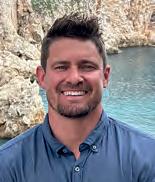
orientation. Consider potential misunderstandings and provide information to avoid them. Just like with any new employee, don’t assume they know anything.
My most successful clients hold at least one full day of orientation followed by job training.
The U.S. manufacturing sector will continue to face labor shortages. The labor force in Puerto Rico may not be large enough to solve all of America’s labor challenges, but for companies willing to take a progressive approach, it can provide exactly the solution they need.
Employers that approach this labor pool with care, reduce relocation barriers, offer transparent job packages and invest in worker training can build teams that improve these employees’ lives and their own operations. z
Clay Martin is the founder of Isla Talent, a recruiting firm specializing in connecting employers with job seekers from Puerto Rico. With more than a decade of recruiting experience on the island and four years in the Peace Corps working with communities in Latin America, Martin brings cultural insight, trust and proven expertise to help companies solve critical workforce needs. Contact Martin at 513-904-8576, clay@recruitingpuertorico.com or www.recruitingpuertorico.com.
“Because Puerto Ricans are U.S. citizens, no visas or red tape are required.”
By Micki Vandeloo

Spring manufacturers face an ongoing challenge of securing skilled labor to meet customer demand while maintaining operational efficiency. Workforce shortages continue to put pressure on manufacturers to find creative solutions for attracting, training and retaining employees. Fortunately, there are funding opportunities available to support both apprenticeship and internship programs, which can be valuable tools for workforce development in the spring manufacturing industry.
Funding for these programs is available to immigrant workers if they’re properly documented and employed full-time by the company.
ers develop a highly skilled workforce while ensuring institutional knowledge is passed on to new employees. The Department of Labor highlights the many benefits of registered apprenticeship programs (RAPs), including:
• About 90% of apprentices retain employment after completing their training.
• Registered apprenticeships allow employers to develop the exact skills needed for production efficiency.
• Apprenticeships enhance employee productivity, profitability and retention rates.
• These programs help manufacturers build a diverse and highly skilled workforce.
A RAP typically includes three essential components:
1. Required Technical Instruction (RTI)
Classroom training to teach apprentices the theoretical knowledge necessary for their roles.
2. On-the-Job Training (OJT)
Practical, hands-on training under the supervision of experienced mentors.
3. Wage Progression
Incremental wage increases tied to skill acquisition and certification milestones. While these programs offer numerous benefits, they also come with significant costs, including training expenses, mentorship costs and wage increases. To offset these expenses, manufacturers can take advantage of various grants and funding opportunities.
There are various sources for apprenticeship grants, and a variety of ways you can find these grants:
• Grants.gov
This federal database lists grants from the Department of Labor and other agencies that support apprenticeship programs. While manufacturers typically cannot apply directly, they can collaborate with community colleges or workforce organizations that receive these funds.
• State Economic Development Websites
Many states offer apprenticeship grants. Conducting state-specific searches can help manufacturers identify relevant funding opportunities.
For more grant opportunities, see “Manufacturing Grant Database.”
Internships offer manufacturers a costeffective way to bring in temporary labor while identifying potential full-time employees. Internships typically last one semester or summer and allow students to gain hands-on experience in manufacturing settings. The advantages of internships include:
• Providing temporary skilled labor at a lower cost.
• Offering employers the chance to evaluate potential full-time hires.
• Giving students real-world exposure to manufacturing careers, increasing industry interest.
However, internships are inherently temporary, meaning knowledge retention and long-term employee conversion can be challenging. To make internships more financially viable, many states offer grants to subsidize wages and encourage manufacturers to provide internship opportunities.
Several states provide funding for internship programs, including:
• Connecticut’s Engineering Internship Program (EIT) Offers up to $7,000 for two interns in eligible manufacturing companies.
• Iowa STEM Internship Program Funds up to $5,000 per internship, with a cap of $50,000 per company.
• Massachusetts Clean Energy Internship Program
Provides stipends covering up to $8,640 per summer intern.
• Nebraska’s InternNE Grant Program
Covers 50% of intern wages, up to $7,500 per internship.
This is not an exhaustive list of available funding. See “Manufacturing Grant Database” for more state and federal programs that support internships.
For spring manufacturers looking to strengthen their workforce pipeline, both apprenticeship and internship programs present viable solutions. While these programs require an investment. Grant funding can significantly reduce costs, making apprenticeship and internship programs more accessible and financially sustainable. By using available funding sources, spring manufacturers can secure skilled labor, enhance productivity and remain competitive in an ever-evolving industry. Springmakers can search the databases in this article and in the sidebar for various federal, state and local grants. Professional grant assistance can also streamline the funding application process. z
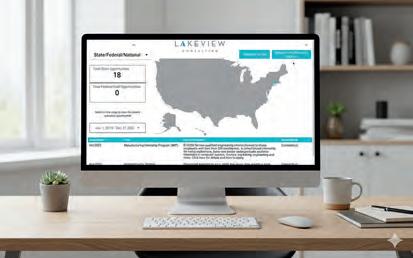
Manufacturing Grant Database
Lakeview Consulting offers a free, regularly updated database that includes apprenticeship grant opportunities by state and industry. (A premium version is also available.) Manufacturers can subscribe at this link: www.smihq.org/go/mfg-grant-db.
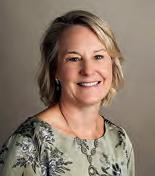
Micki Vandeloo, president of Lakeview Consulting, Inc. (www.lakeviewconsulting.net) in St. Louis, has more than 25 years’ experience in manufacturing. She helps clients clarify project goals, plan new services and programs and secure grant funding to support their missions. Vandeloo’s team has written more than 850 grant proposals and obtained more than $260 million in grant funding. Contact Vandeloo at micki@lakeviewconsulting.net or 618-977-8570.




By Joanne G. Sujansky, Ph.D., CSP
Editor’s Note:
In 2005, the year this article was written, Pope John Paul II died, YouTube launched and Hurricane Katrina devastated New Orleans. While life has changed a lot since then, the core principles Joanne Sujansky writes about remain true: leaders who model and coach respect for workplace diversity help build welcoming, productive corporate cultures.
Today’s leader must motivate and retain talent. That talent is perhaps the most diverse it’s ever been. The differences include many kinds: race, ethnicity, gender, age, sexual orientation, lifestyle, physical and mental challenges, geographic origin, education, personality, values, experience, religion and socioeconomic status. There are five common traps that leaders fall into when leading diverse teams, as discussed below. Also included are some suggestions for avoiding these mistakes:
1. Not Valuing Differences. When leaders see differences as an advantage, they seek diversity in their teams and work hard to get different perspectives and opinions on the table. They naturally encourage individuality while promoting teamwork. This means they actively encourage team members to share ideas and to suggest options that have not already been considered.
2. Failure to create an inclusive environment. Leaders need to encourage the involvement of all team members who, in turn, need to feel comfortable about offering suggestions and challenging ideas or practices. Leaders demonstrate inclusion by being open to new ideas, listening to different perspectives and encouraging creative problem solving. An inclusive leader will challenge the group with comments like, “What other ways can we spin this idea?” or “Who can suggest something totally radical to what we’ve done in the past?”
A leader may also encourage participation by asking individuals to list ideas on cards they could add to a master brainstorm list.
3. Stereotyping. Leaders must avoid associating any behaviors, talents or lack of ability with any group. For instance, any leader who assumes that all women are
emotional or that all Asians are excellent in math is guilty of prejudice and, further, does not acknowledge the uniqueness of the individual.
4. Not modeling the expected behaviors. Effective leaders demonstrate the behaviors they want from others. When they show respect for differences, develop trust in their teams and promote the valuing of differences, they set the standard for how others should behave. They should clearly communicate that disrespect for others will not be tolerated. If they observe inappropriate actions or hear disparaging comments, leaders need to be quick to confront the behavior and to suggest or encourage more appropriate ways to handle the situations.
5. Failure to coach. Leaders need to make expectations clear to all employees and coach them individually toward higher levels of performance and growth. Beside individual.individual coaching, leaders will need to help diverse teams with conflicts that may arise from their differences. The leader must also encourage team members to coach others. As coaching becomes part of the environment, new team members can access and build mentor relationships with others who serve as helpful resources within the organization.
Talented individuals bring different perspectives and ideas to the workplace. It’s a leader's job to attract and retain them. Avoiding these five traps can move diverse teams to their highest level of performance. z
Joanne G. Sujansky, Ph.D., CSP is the founder of KEY Group, an international assessment and training firm. Sujansky is a frequently featured speaker and has written many books on leadership, change and retention.
Enroll today to take advantage of your exclusive membership rates!
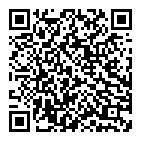
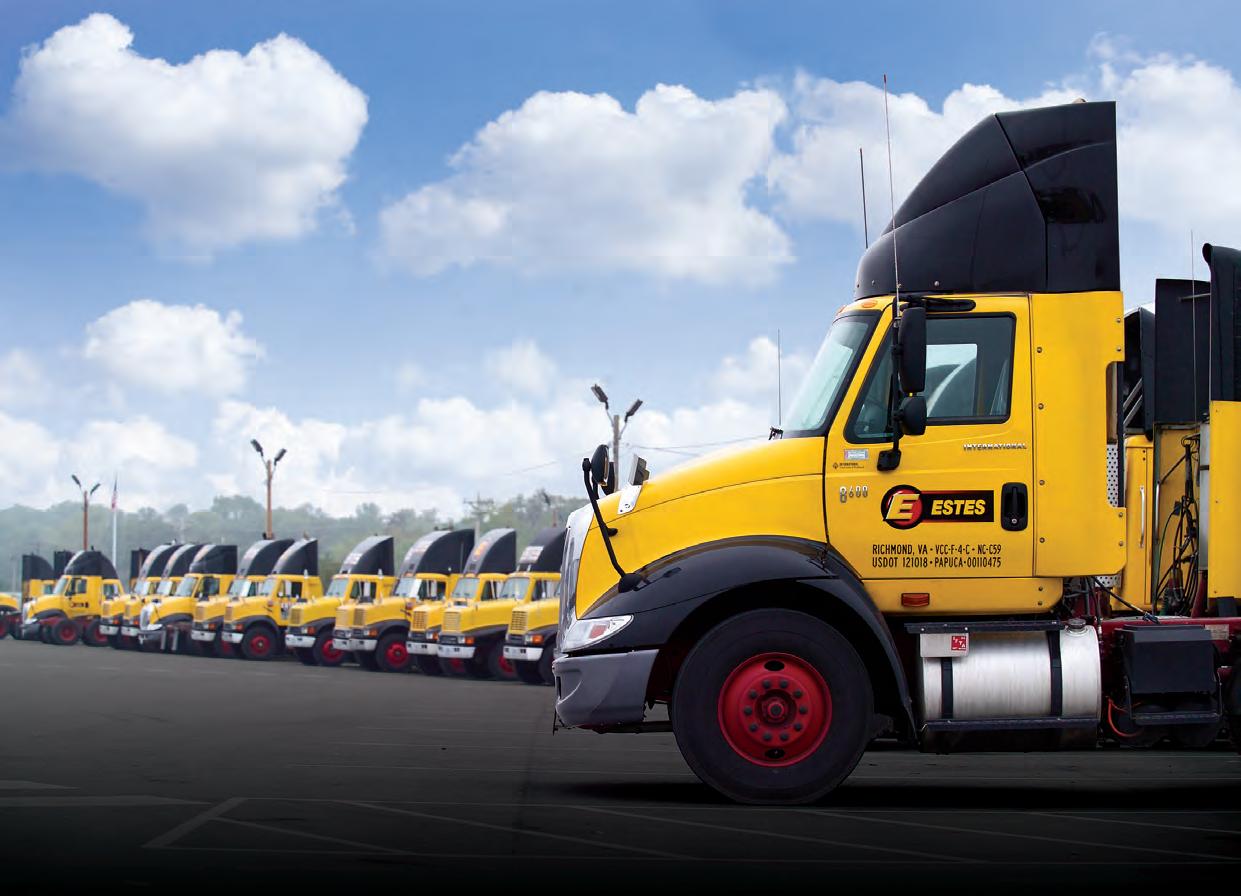


Five Questions allows SMI associate members to tell the spring industry about their products and services. In this edition, we talk with Joey Mandel from
1
Tell us about your company’s history and products.
Tri Star Metals, founded in 1985 in Hoffman Estates, Illinois, began as a stainless steel and aluminum bar broker focused on quality and service. We have expanded over the years, opening a distribution center in 1987, entering the cold-drawn forming wire market in 1996 as the exclusive U.S. distributor for Hagener Feinstahl and earning ISO 9001 certification in 2001.
A pivotal shift occurred in 2009 with new ownership and the acquisition of Pinnacle Metals, transitioning Tri Star into a full-scale manufacturer. Following that, we expanded facilities in Illinois and Arizona. The company earned AS9100 certification in 2017 and has since consolidated and enhanced its operations, growing from 25 to 140 employees and investing more than $40 million in equipment and infrastructure. In 2025, Tri Star bolstered its manufacturing and distribution capabilities through the strategic acquisition of Connecticut’s Siri Wire, bringing our expertise and reach into a broader product portfolio and customer base.
2 What trends are impacting your industry? How does it affect springmakers?
The recent tariffs have significantly impacted the metals market, creating unforeseen challenges across the entire industry. While costs have risen across the board, Tri Star is committed to supporting customers by working closely together, absorbing as much impact as possible and keeping them informed. For springmakers, the tariffs have directly increased the cost of spring materials, putting added pressure on production expenses.
3
What products and services do you provide springmakers?
We supply cold-drawn stainless-steel wire in grades such as 302, 304, 316 and 17-7, among many others. We also provide stainless steel bar, aluminum and nickel alloys. Beyond the material, our greatest value lies in our outstanding customer service. Our dedicated quality team is second to none. We take great pride in always being ready to support our customers. Our global sourcing network and strong partnerships with domestic mills allow us to offer 100% melted-and-manufactured USMCA-compliant material and cost-effective imports tailored to meet our customers’ specific needs.
4
What role does logistics play in serving springmakers?
We carefully select the freight lines we partner with to ensure reliability and consistent service.
5
What was a recent challenge you solved for a customer?
Tri Star recently supported a springmaker with a challenging application. The wire required a consistent soap coating, not too heavy and not too light. Excess soap had been gumming up their machines. Our team tested different soaps, dies and breakdown setups to achieve the right balance.
I visited their facility with our head metallurgist, Gary Maddock, to observe the trials firsthand. With valuable feedback from the customer and fine-tuning by our quality team, we delivered a solution that met their exact needs while keeping their machines running smoothly. z
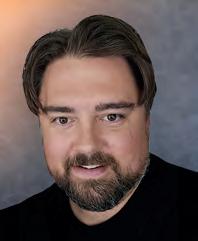
Tri Star Metals 1851 W. Galena Blvd. Aurora, IL 60506
Phone: 630-868-7928
joeymandel@tristarmetals.com www.tristarmetals.com
Follow SMI on social media for bonus content on Joey Mandel and Tri Star Metals.

By Gary McCoy, Executive Director
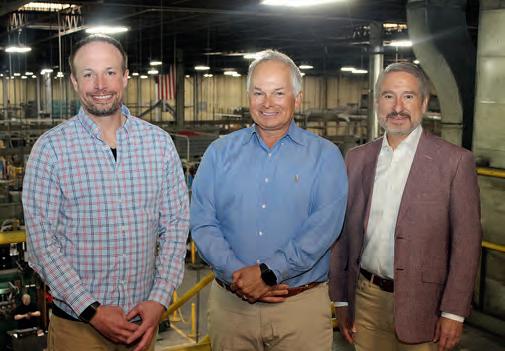
The owners and operators of Wisconsinbased Oshkosh Coil Spring Inc. have displayed flexibility and adaptability as spring manufacturers during their 66 years in business. It all started in founder Dennis Trembly’s garage in 1959 and has grown into a 24-hour per day business that employs more than 100 workers out of their 75,500 square foot facility in central Wisconsin.
The company is now in the hands of secondgeneration co-owners, Wayne Trembly, president and CEO and his brother, Jeff Trembly, vice president and CFO. The company extends to the next generation with Wayne’s son, Jason Trembly, serving as the company’s production manager.
Springs, Sausage and Siphons
Growing up on a farm in southwestern Minnesota during the Great Depression, Dennis Trembly experienced a difficult childhood. In 1951 he determined to set out on his own and moved to St. Paul where he found employment at Mid-West Spring. While working there, he met his future wife, Barbara Burg. They married while Dennis was on leave from active duty with the United States Army based out of Fort Lewis in Tacoma, Washington.
After the wedding, they relocated to Renton, Washington, so Dennis could finish his active-duty obligation. He was honorably discharged in 1957, and Dennis found employment at Renton Coil Spring. After the passing of his father-in-law in 1959, the family relocated to Oshkosh to be closer to
Barb’s mother. Together, the couple founded Oshkosh Coil Spring to fill the local spring manufacturing void that existed in central Wisconsin. Dennis grew the business over the ensuing 39 years before selling the company to his sons, Wayne and Jeff, in 1998.
The company initially operated out of a small storefront, using homemade equipment to manufacture springs by hand.
“The building owner was a butcher,” Wayne says. “My dad would go to the back of the building to pay the rent, and the guy would give me a piece of sausage.”
As both Wayne and Jeff remember, the company ran steadily through the ’60s with about six employees. When the Arab oil embargo hit in the early ’70s, Dennis produced a product called “Siphon Proof” to prevent people from siphoning gas (a common occurrence at that time). The device had a spring that would block the hole where gas is inserted, so thieves could not push a siphon hose inside the gas tank.
Wayne says they sold more than half a million units of the product before the “bad guys” figured out how to disable the product and push the siphon through.
“As the story goes, there were at least half a million springs in gas tanks for a while,” Wayne says with a laugh.
The product was no joking matter, because sales from it enabled the company to manage a challenging economic period marked by high inflation.
Both brothers fondly remember their dad as someone who could fix anything. Before electric cars were a thing, they recall their dad gutting an old Volkswagen Beetle and hooking up a series of 10 car batteries to make it run. Due to the heavy weight of the batteries and the inability to hold a charge, the Beetle would only go about 20 or 30 miles.
“Our dad was pretty easygoing,” Wayne says. “He knew most of the employees and was ready to help them with whatever they needed. They were like family. He was a generous person.”
Having joined the company in 2010, Jason never worked directly with his grandpa but has good memories of using his grandpa’s go-karts and coming into the plant on weekends to talk with him.
Oshkosh Coil Spring has expanded over the decades, moving to several different locations before settling into its current facility. As the company boasts on its website, “Small-town attitudes, small overhead and state-of-the-art equipment has been a great combination for Oshkosh Coil Spring Inc.’s growth over the years.”
The second generation (Wayne and Jeff) took over the business in the late ’90s when Dennis retired. They have an older and younger sister, Janeice and Denise, but neither of them ever got involved in the business.
After he retired, Dennis and Barbara spent time between Wisconsin and Florida. “If he was in town, dad would come by the plant every day, and we kept his office for almost 10 years after he retired,” the brothers explained. Dennis died May 28, 2024, at 91. His beloved wife, Barbara, died May 11, 2018, at 86.
As the older brother, Wayne was the first to work full time at the company after attending

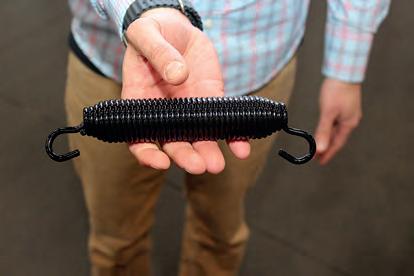
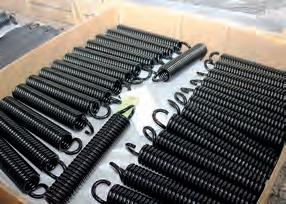
the University of Wisconsin–Stout. “We had two or three coilers at the time, and I could setup and run all of them,” Wayne explains. “This is what I’ve done my whole life.”
Jeff joined the company full-time in 1989. At the time, he was one semester short of completing his degree in finance and accounting. He had worked at the company throughout high school and during summer breaks from college, both in the office, shipping department and on the production floor.
“I was the original IT department. I put in our first office computer and trained the office personnel on how to create invoices
Small-town attitudes, small overhead and state-of-the-art equipment has been a great combination for Oshkosh Coil Spring Inc.’s growth over the years.
and many other things,” Jeff explains. “I did that for a decade or more until that became Jason’s area of responsibility and we now outsource that function.”
Jeff remembers one major company milestone in the early ’90s when they began working with Oshkosh Truck (now Oshkosh Corp.) on a project called PLS (palletized loading system). “PLS was a big project for us, and we ended up purchasing several new machines to complete it.”
Jason worked on the shop floor at Oshkosh Coil during high school and while attending a local college. He moved to the Twin Cities to attend the Art Institute of Minnesota, where he earned a B.A. degree in photography. He says he learned a lot about project management in putting together large photo shoots, which helped prepare him for scheduling at Oshkosh Coil when he joined the company full-time in 2010.
While he had initially thought about doing something outside of the spring industry, Jason says, “I’m the type of person that can be happy doing anything as long as I’m trying to be the best at what I do.”
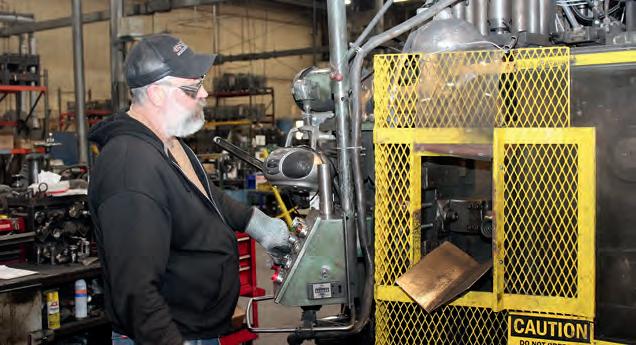
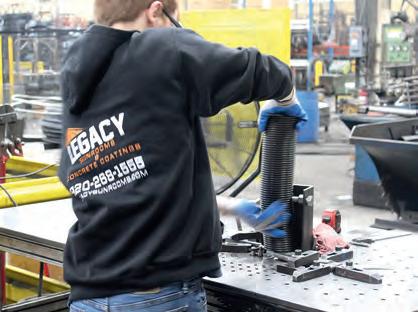
Oshkosh boasts about its ability to make cold wound springs in a gamut of sizes from fine to large wire coiling in sizes from .008 to .625. They also serve many different industries, such as electronics, lawn and garden, agriculture, construction and defense.
“I think the real strength of our company is that we are pretty diversified,” Wayne says.
Like most spring companies, they manufacture springs for a gamut of odd things. “If you go to the coffee stand at a KwikTrip gas station and you pull up a Styrofoam or paper cup, our cylinder compression spring helps push the cup out,” Wayne says.
“We’ve had customers that might have had four or five different spring suppliers and they worked their way down to one because of our range capability,” Jason explains. “That larger wire range is where we separate from the crowd. And some of that is by the nature of the industry, where there are not a lot of spring manufacturers who can make larger sizes like we can.”
“We do a lot of design work and new product development, which gives us the chance to bid on a lot of projects and get our foot in the door,” Jason says.
“Our quality is as good as anyone in our industry. Along with our ability to deliver under normal circumstances,” Jeff boasts. “Between Wayne and Jason, we can go in and solve customer problems, come up with a design and give them a solution.”
“We have, in any typical year, probably 800 different customers here at our plant,” Wayne says. “Our customer base is much larger, but you have some customers who might buy once every other year or every 18 months.”
The company works with around 1,200 different part numbers at any given time. They do some wireforming and fourslide stamping, but the core of their business is primarily extension, compression and torsion springs.
“The nice thing about being diversified as we are, we’re family-owned and consistent. Having a stable workforce helps, as well,” Wayne says.
Oshkosh Coil has a core group of 40 employees who have been with the company for more than 35 years. With a tight labor market, the leaders at Oshkosh Coil are thankful for a loyal employee population. Oshkosh is unique among spring companies because
We do a lot of design work and new product development, which gives us the chance to bid on a lot of projects and get our foot in the door. Our quality is as good as anyone in our industry.
it operates 24 hours a day with three shifts. They credit automation for helping stabilize operations. Before COVID-19, the company boasted a peak workforce of nearly 125.
“People make the difference,” Wayne says. “We’ve been very fortunate to have a strong core group of employees.”
The leaders at Oshkosh Coil acknowledge that as people are beginning to retire, they are looking to build a team for the future, admitting that the task is a challenge.
“We are focused a lot on training and cross-training as we bring in new people,” Jason says. “We are being a little bit pickier when we’re hiring. We are looking for longevity, more than their skill set. We like to get somebody into our company so we can invest in training them. It helps if we know they are going to be here for five, 10 or 20 years, so we know we are going to eventually get the payback.”
The company is also putting efforts into developing training documents to help retain the institutional knowledge of long-term employees. “We worry about the brain drain of these 35-year employees,” Jason explains. They are producing instructional videos to supplement the paper documentation.
Wayne and Jeff have talked about the company’s future, but have not put together an exit strategy. They both would love to see the company go forward into the third generation, recognizing the challenges that go along with it.
“I have four children,” declares Jason, who represents the third generation. “I would absolutely like to see this go into the fourth generation with them.”
Besides generational issues, the leaders at Oshkosh Coil are mindful of artificial intelligence (AI) and how it might affect the company. “It will be interesting to see how it translates to the shop floor,” Jason comments.
“Right now, we use AI on the shop floor more for problem-solving,” Jason says. “It’s more for doing research on particular projects.”
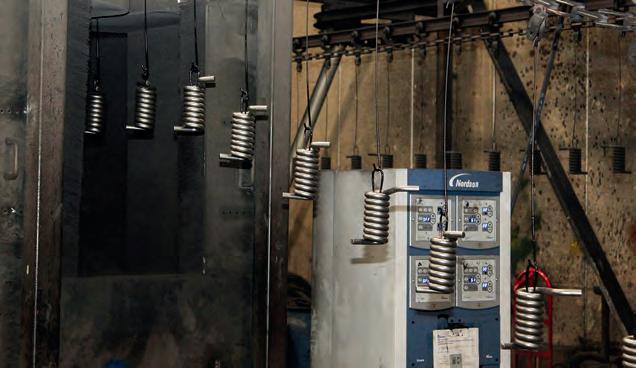
In addition, they have used AI for some tooling and maintenance issues and in human resources.
The leaders at Oshkosh Coil recognize the role of consolidation in the spring industry, but none of them see it going away. Especially for their company because some of their coiling projects still require some handwork to complete.
While cautious about the impact of tariffs, Jason says, “I’m always an optimistic person.”
“I’ve been around long enough, like Wayne, to see several downturns take place,” Jeff adds. “America always comes back, and so does manufacturing. There are good signs with reshoring.”
“I think that the industry has some really positive upsides and is constantly morphing,” Wayne says. “I’m optimistic about the future of our company for sure. And I think, as Jeff was saying, there will be some reshoring and a little bit more manufacturing going on here in the next decade.”
“I think going forward that things are probably going to balance out a little bit more,” he adds. “Hopefully it will become more consistent in terms of customers and suppliers.”
Thanks to a legacy of adaptability, the future is promising for the spring company founded by a determined Army veteran more than 60 years ago. z

By Sara Scullin
Audra Liaugaudiene on the Art and Science of Springmaking

“If you had told me years ago that I would build a career around springs, I probably would have smiled politely and changed the subject because it was never my goal,” says supply chain professional and SMI member, Audra Liaugaudiene. “But the opportunity came up to join the industry. And I thought, ‘Well, why not? I have to start somewhere.’ It was a professional field, and I was motivated to succeed.”
Audra Liaugaudiene, Vice President of Supply Chain for MW Components in Charlotte, North Carolina, immigrated to the U.S. from Lithuania in 1996 and launched a successful career in spring manufacturing and supply chain management. She continues to find inspiration in the art and science of springmaking, even as global supply chain woes and emerging tools like AI rock the industry.
At the start of her successful career, Liaugaudiene faced down a language barrier.
“My biggest obstacle was that I didn’t speak English,” she recalls. “For a few years, I went backward before I started going forward.”
But Liaugaudiene was driven and motivated to succeed—qualities which have served her well in a critical role that entails relationship-building, tech savvy and constant learning.
In 2001, Liaugaudiene learned about springmaking at the Peterson American Corporation plant in Three Rivers, Michigan. She spent another five years in a sales position at Gibbs Wire and Steel in South Bend, Indiana. In 2013, Liaugaudiene joined MW Components. Here she drew on her
understanding of both manufacturing and supplier perspectives to successfully manage the company’s supply chain.
Liaugaudiene says she didn’t fully appreciate how essential springs are until she spent time in the field. Her manufacturing career was propelled by a fascination with how things work and what went into making the parts.
“I remember walking on the floor at Peterson and seeing the operators,” says Liaugaudiene. “I’d talk to them about what is important to them, and I heard how passionate they were about the art and science of making springs. I realized, ‘Wow, this is not pushing a button and getting a good spring. It takes a lot of skill and talent to produce a good spring. That was my beginning. I dived into a procurement role at Peterson. The best way to learn was to be on the floor, see what people do and how I can support them.”
In procurement, Liaugaudiene worked with engineers and operators to source better materials, innovate tools and improve project delivery. The goal? Find ways to evolve and improve processes.
“In the world of precision engineering, every decision—sourcing, supplier relationships, quality and flow of materials— all of it directly impacts the outcome and what kind of spring you get,” she says. “Once I built that relationship between operators and suppliers, I could help everyone succeed and deliver a better product to customers,”
“When I first started in 2013 with MW Components, I had a pretty coherent view of how we could make the supply chain work to build relationships and improve communication,” Liaugaudiene says. “The past few years have been a master class in adaptability.”
While COVID-19 ignited supply chain disruptions and raw material shortages, global markets continued to shift and unpredictable tariffs add to the puzzle. Liaugaudiene says navigating these challenges means “thinking beyond the fix.”
“Getting through those challenges meant strengthening supplier partnerships. It was diversifying sourcing strategies. It was improving forecast accuracy and collaborating closely with engineers and operations,” she explains. “It just reinforced in me that supply chain success is built on relationships
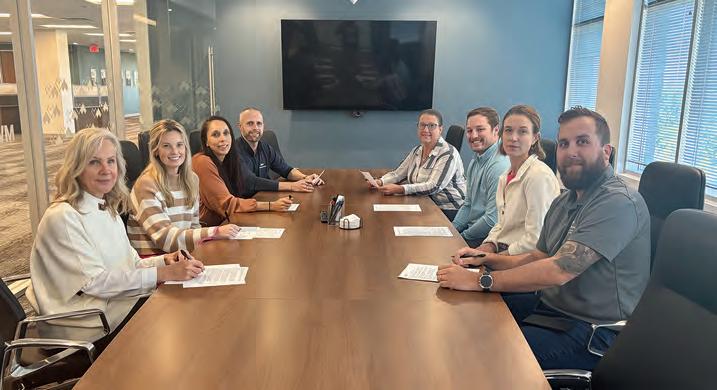
and foresight, not just transactions. If you focus on transactions only, you will not succeed, because the supply chain will either make you successful or break you.”
She firmly believes productive team dynamics and transparent customer relationships are mission-critical.
“It’s not just about reacting; it’s about anticipating and creating a network that can weather the storm. Once you have that, you can continue to build on it,” she concludes.
Almost every challenge is an opportunity.
When Liaugaudiene started in manufacturing, the technology was already sophisticated. But in the past five years? “Mind-blowing,” she says. From advanced tracking systems that improve transparency to automation and data analytics, today’s software and technology are changing supply chain dynamics.
Business intelligence tools for reporting, planning and forecasting “make processes easier, but come with an additional learning curve,” she says.
Finally, Liaugaudiene believes that although still in its infancy, AI technology is already transformational.
These tech advances are a double-edged sword. In some ways, they make the job easier. But Liaugaudiene points out that customers’ accessibility and expectations increase right along with that technology.
“Whatever you learned yesterday soon becomes obsolete. So, my job involves continuous education, continuous collaboration with suppliers and customers,” says Liaugaudiene.
To Liaugaudiene, springs aren’t just metal bits and pieces but “enablers” that make vehicles safer and bring surgical instruments to life.
“You’re every bit a part of the medical/ automotive/aerospace industry,” she says, “And it’s so exciting. You understand how critical quality is. Someone’s life depends on how well you produce that spring and the supply chain is truly the lifeline that ensures each project has the resources to meet all the many standards and timelines.”
Her personal “win” is seeing a project delivered on time, while meeting every standard and knowing that supply chain strategy played a direct role in making it happen.
Liaugaudiene’s success as a supply chain manager and leader is not self-contained.
The past few years have been a master class in adaptability.
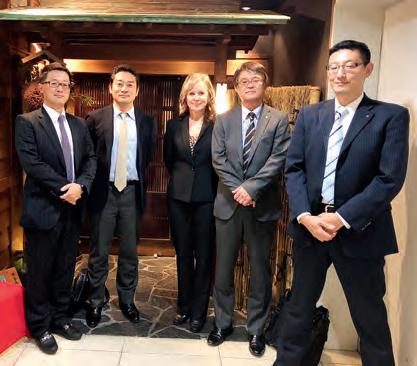
Beyond attending her company’s leadership meetings, she taps into market intelligence webinars and seminars for forecasts, suggestions and best practices. She keeps a robust network.
“It makes my job rewarding and easier,” she says, adding, “I enjoy collaborating with people. This is something I’m passionate about.”
She recalls the many people who have helped her succeed throughout her career, from engineers to customer service professionals. “I’m a firm believer that team is so critical as you grow. When you have a chance to succeed, you bring the team along with you. Empower them… and this will reflect in a successful result.”
Liaugaudiene shares these leadership lessons: Embrace innovation. Never stop learning. Welcome new voices to the table.
“Almost every challenge is an opportunity. And in procurement and supply chain, especially working together as a team with suppliers, engineers, a quality team and customers, is how you deliver results.
“Always remember your perspective is valuable,” she concludes. “Your ideas matter, and you belong to the room where solutions are built.” z

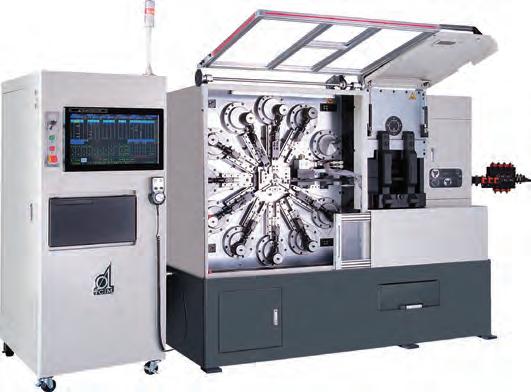
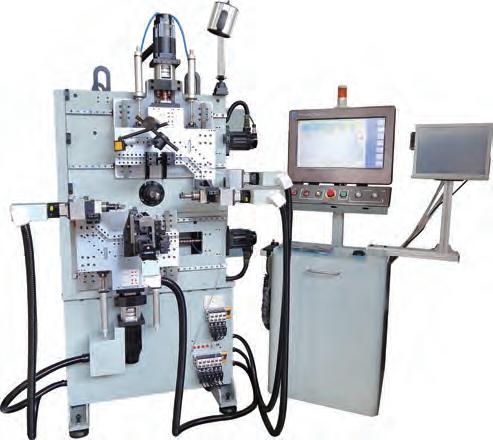

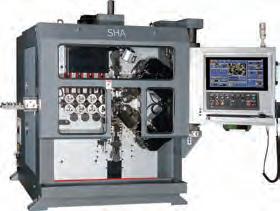




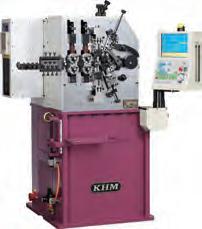



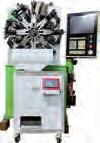
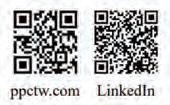

By Gary McCoy
As SMI’s executive director, members always ask me about ways to recruit more workers. There are no simple answers, because every region, state and town is different.
I believe becoming a business sponsor for a team of local SkillsUSA students is a great way to supplement what you are already doing in workforce development with your local junior high, high school, community college and trade schools. It is also a great addition to Manufacturing Day events held each October.
Another great way to get started is to attend the SkillsUSA Championships, the premier showcase of America’s most highly skilled career and technical education students. It’s also one of the largest handson workforce development events in the world. Held in conjunction with SkillsUSA’s
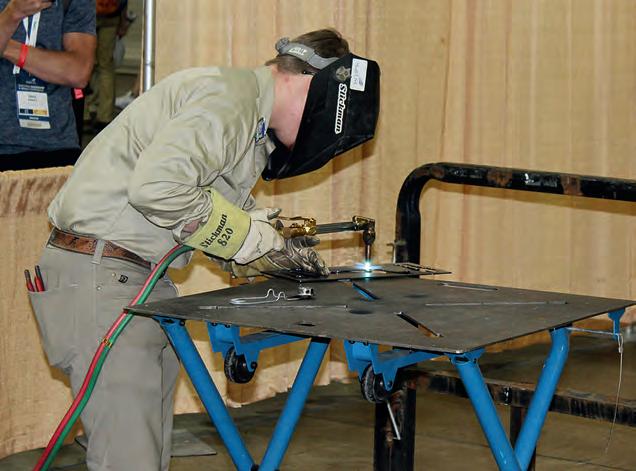
National Leadership and Skills Conference each June, it is awe-inspiring to see more than 6,700 state champions from across the United States competing head-to-head in 114 skilled and leadership competitions.
This year, I attended the 2025 event in Atlanta, Georgia, June 23–27 at the Georgia World Congress Center, with SMI president Don Jacobson III of Newcomb Spring. We both served as judges and enjoyed the opportunity to visit with students about their career aspirations.
The 2025 conference theme was “SkillsUSA: Ignite Your Potential.” This year’s event, marking its 60th anniversary, was the largest in SkillsUSA history, with more than 18,000 attendees. The conference aims to showcase career and technical education students and address the skilled worker gap in the U.S.
“This was my second U.S. championship that I got to attend,” Jacobson said. “For the past 12 months, I’ve been preaching
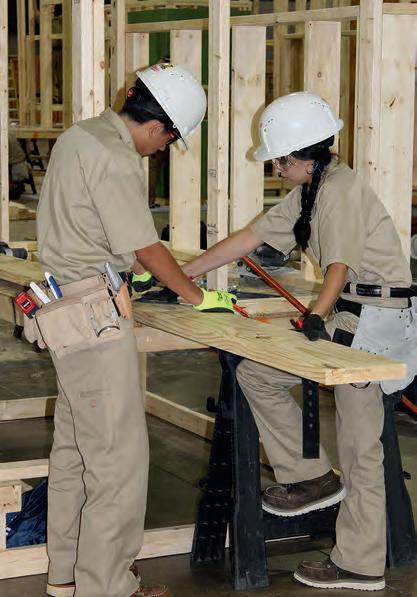

to everyone that I know how important SkillsUSA is to your company. And when I say company, I mean any company. While we’re manufacturers and springmakers, these students are showcasing their engineering, coding, building, custodial, baking, mechatronic and art talents.”
Jacobson further elaborated, “SkillsUSA is such an amazing organization that allows middle school through postgraduate students with the opportunity to not only grow in something that they’re passionate about, but also to compete at the state, national and international levels.”
There are many opportunities to volunteer. “Anyone on any level from a company can come and judge and spend time with these students,” said Jacobson. “They’re always looking for more volunteers to judge or to just help out with registration or with any of the events that are going on throughout downtown Atlanta.”
“It was just an amazing weeklong celebration for what these students have done,” Jacobson concluded about the 2025 event. z
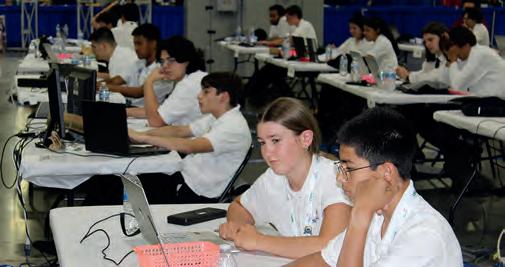
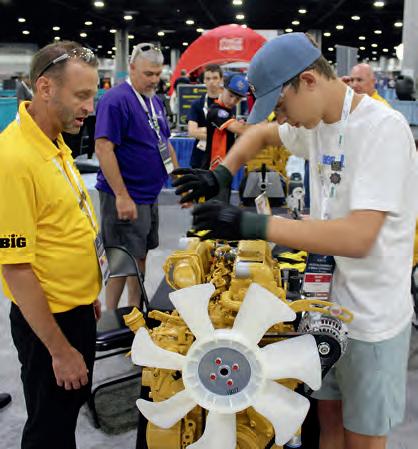

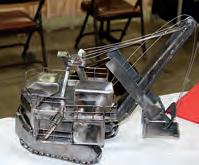
To learn more about the next event, June 1–5, 2026, in Atlanta, including volunteer opportunities, visit www.skillsusa.org/competitions/skillsusa-championships.
SkillsUSA is such an amazing organization that allows middle school through postgraduate students with the opportunity to not only grow in something that they’re passionate about, but also to compete at the state, national and international levels.



Gary McCoy
Recently, our pastor shared a story that was new to me about President John F. Kennedy’s 1962 visit to NASA headquarters. The President met a janitor who was cleaning the facility. When asked about his job, the janitor proudly replied, “I’m helping put a man on the moon.”
This chance meeting highlights that all roles within an organization have value, regardless of how significant they may seem. I’ve had the privilege of meeting SMI members who’ve had springs that are used on many ordinary applications, but also some remarkable ones like the Mars rover or the Hubble Space Telescope.
It is essential that all team members, from the front office to the shop floor, understand (like the NASA janitor) how their contributions impact your customers and overall organizational success. Leadership plays a crucial role in fostering this sense of purpose and cultivating an environment in which each employee feels appreciated.
I was reminded about the impact of leadership when my dear friend and business colleague, Dr. John A. Passante, joined me on the “Springs Are Everywhere” podcast (Season 2, Episode 4). I’ve known John for almost two decades and served as editor of his book “The Human Side: High-Touch Leadership in a High-Tech World.” I can attest to his insights into people-focused leadership.
At a young age, John and I both served as paper boys and caddies. They are humble jobs that teach you the value of hard work and how to best serve your customers.
On the podcast, John recounted a formative experience from his time in the Air Force when he befriended an African American soldier in the early 1960s. While off base in San Antonio, Texas, they were denied service at two restaurants due to segregation before finally being served at a third establishment. His friend remarked, “John, I’m used to it.”
John told me that experience carried over to his human resources career, where he made it a point to treat everybody the same.
“We’re all creatures of God. And whether you’re the CEO or you’re the janitor, it really doesn’t matter. We’re in this life together. And sometimes companies forget about the human side.”
Remember the power of genuine human connections and the value each employee adds to your company’s mission.
Gary McCoy Executive Director
The bimonthly podcast, hosted by SMI Executive Director Gary McCoy, features leading experts discussing issues especially relevant to manufacturers of springs, wireforms and stampings. Apple https://apple.co/3OJODed




Be sure to join your SMI colleagues in Puerto Rico for the 2026 SMI Annual Meeting, March 5–8, at the Wyndham Grand Rio Mar in Río Grande, Puerto Rico. Conference registration will soon be available online at SMI’s website.
Two keynote speakers are already confirmed. Susan Frew will discuss practical uses of artificial intelligence (AI), while former NFL tight end Desmond Clark will provide inspiration and leadership insights.
Named an “AI Thought Leader” by LinkedIn Asia, Frew has taken the stage as a TEDx speaker, Fortune 20 executive and as a business coach helping companies use AI for real-world success.
A master at making AI practical, profitable and accessible, Frew is known for bringing her sharp wit and hands-on strategies to help businesses streamline operations, reduce costs and gain a competitive edge. She is the author of the book “Compete on Awesome with AI.”
Her SMI presentation is designed to demystify AI, spark innovation and equip members with the tools to take your business to the next level.
Clark spent 12 years in the NFL as a tight end with the Chicago Bears, Denver Broncos



and Miami Dolphins. He’s now an entrepreneur serving as the owner, president and CEO of Bear Down Logistics.
Clark is the author of “Principles of Winning.” Clark’s presentation will look at the five keys that empower everyone to win, drawing from his NFL career and entrepreneurial journey.
Clark shares insights from his childhood, highlighting how his struggles and his mother’s resilience shaped his character. He discusses the importance of self-belief, the process of greatness and how success is a series of disciplined choices. Clark delves into the mental challenges and the transition from professional sports to the business world, emphasizing the power of relationships, self-motivation and result-oriented goals.
Clark’s presentation will outline his vision for a legacy that inspires and elevates others to achieve greatness.
SMI thanks our initial 2026 Annual Meeting sponsors. Platinum sponsors are HSM Wire Technology, Gibbs Interwire and Industrial Steel and Wire. Gold sponsor is WAFIOS, and Silver sponsors are Amstek Metal and Tri Star Metals.
To join the growing list of sponsors, please contact Gaby Carrasco at gaby@smihq.org.
SMI, in partnership with WAFIOS, will offer a special spring end grinding webinar Thursday, Nov. 6, 2025, from 1–5 p.m. EST on Microsoft Teams. The class is part of SMI’s spring design and manufacturing education series.
The instructor, Simon Haase, is an applications engineer for WAFIOS at the company’s Midwest Technical Center in Mokena, Illinois. He specializes in spring end grinding technology and applications for the electric vehicle industry. Before moving to the U.S. in 2023, he worked six years for WAFIOS in Reutlingen, Germany as the technology engineer for the spring end grinding department. He studied mechanical engineering in Dresden, Germany.
The Spring End Grinding Training Course delivers an in-depth and structured overview of the fundamental principles of spring end grinding. Participants will acquire advanced technical knowledge on machinery, processes, technology, automation and software used in spring end grinding applications.
Students will learn about the grinding process within the larger context of spring manufacturing, gaining insight into the correlation between process parameters and influencing factors. This understanding is crucial for efficient process control and cost optimization. Each student will receive a set of presentation slides, a commemorative T-shirt and a certificate of completion, to provide valuable resources and recognition of their new skills.
Students will have the opportunity to seek opinions and clarification of any spring end grinding-related issues they may have.
This class will benefit students by increasing their spring end grinding knowledge and their company by having a trained associate as part of their team.
Registration for this webinar is $145 for SMI members and $425 for nonmembers (with discounts for multiple students).
For more information and to register, visit www.smihq.org/go/end-grinding.
As a component of SMI’s Advanced Spring Design (ASD7) computer software, SMI offers spring design training programs to help industry newcomers and veterans increase their knowledge. Training is available to both members and nonmembers.
Class Date*
202 Extension Spring Design
203 Torsion Spring Design
Webinars are scheduled from 1–5 p.m. EST. *Dates are subject to change.
Nov. 20, 2025
Dec. 18, 2025
For more information and to register for classes, visit www.smihq.org/go/tech-classes or contact Gaby Carrasco at gaby@smihq.org.
SMI is pleased to welcome our newest members
J Howard Services Jim Arakawa, President sales@jhservicegroup.com 562-430-0038
Associate
Tri Star Metals Joey Mandel, Strategic Account Manager joeymandel@tristarmetals.com www.tristarmetals.com 630-868-7928
SMI primary manufacturing members should should have received an email in early October to participate in the biannual Salary and Fringe Benefit Survey. This is a compensation survey of the salaried employees of SMI members.
The 2025 Salary and Fringe Benefit Report provides cumulative results of all SMI manufacturers that respond to the survey.
The report looks at the compensation level for the “typical” SMI firm and a “range of common experience.” The range of common experience is from the 25th to the 75th percentile of the reported results. This range reflects the compensation level for most SMI manufacturers and excludes any extraordinarily high or low numbers that may have been reported. This data is also useful for recruiting and employee promotion purposes. Assuming sample size permits, the data will be analyzed by region and sales size.
As with all benchmarking studies conducted on behalf of SMI by Mackay Research Group, confidentiality is of the utmost importance. Only Mackay Research Group has access to individual company data. Because members send the survey directly to them, the SMI staff does not have access to the salary information of any individual company.
The Mackay Research Group abides by a strict code of business ethics which respects the confidential nature of the data. We offer this written assurance that no individual firm’s salary data supplied will ever be seen by or revealed to any persons outside the immediate and necessary staff of the Mackay Research Group.
Be sure to report your results by the published cutoff date of Oct. 31. Only those who participate in the survey will receive the 2025 SMI Salary Fringe Benefit Report in November.
SMI regularly surveys its members to help them understand their performance compared to others in the industry. We respect your privacy and recognize the importance of confidentiality. No company data is ever shared with SMI members, SMI itself or any third parties. 2025–26 Schedule
Fourth Quarter 2025
First Quarter 2026
6, 2026
16, 2026 Jan. 17, 2026
April 7, 2026 April 17, 2026
Second Quarter 2026 July 7, 2026
&
July 17, 2026
April 18, 2026
July 18, 2026
Market Survey (regular member contacts and prospective members)
Industry Report to SMI April 2, 2026 May 31, 2026
July 15, 2026
Individualized Reports to SMI Members July 31, 2026
For more information about participating in SMI’s benchmarking programs, contact Gaby Carrasco at gaby@smihq.org.
April 13-16
Nov. 6
WAFIOS Spring End Grinding Webinar Online
www.smihq.org/go/end-grinding
Nov. 20
SMI 202 — Extension Spring Design Class Online www.smihq.org/go/tech-classes
Dec. 18
SMI 203 — Torsion Spring Design Class Online www.smihq.org/go/tech-classes
2026
Jan. 15
SMI 301 Springs — Fatigue SpringDesign Class Online
www.smihq.org/go/tech-classes
Feb. 19
SMI 304 — Dimensioning, Tolerancing and Testing Spring Design Class Online
www.smihq.org/go/tech-classes
March 5–8
2026 SMI Annual Meeting Wyndham Grand Rio Mar Río Grande, Puerto Rico www.smihq.org/annual-meeting
We’d love to hear from you! Springs welcomes your notes and comments on the contents of our publication. Please email Phil Sasso, managing editor, at phil@smihq.org. 2025
wire 2026 — International Wire and Cable Trade Fair
Fairground Düsseldorf Düsseldorf, Germany www.wire-tradefair.com
April 23
SMI 201 — Compression Spring Design Class Online
www.smihq.org/go/tech-classes
May 21
SMI 202 — Extension Spring Design Class Online
www.smihq.org/go/tech-classes
June 18
SMI 203 Torsion Spring Design Class Online
www.smihq.org/go/tech-classes
Oct. 7—9
SpringWorld Symposium and Expo 2026
Donald E. Stephens Convention Center Rosemont, Illinois http://springworld.org

SMI members receive priority placement for their product, company, personnel and events announcements in the magazine. Your news releases should be roughly 50 to 100 words and may be accompanied by color photos (high-resolution .JPEG photos at 300 dpi preferred). Send to gaby@smihq.org.

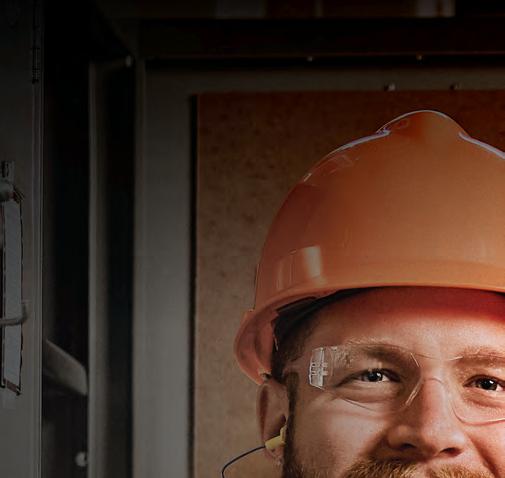









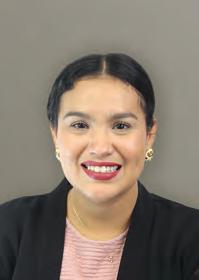
Gaby Carrasco
The Executive Coach for Moms Podcast | Leanna Laskey McGrath
E115 | Sept. 4, 2025 | 22 min.
In September 2024, after welcoming my now one-year-old son, I faced a big question: should I return to work or take a break and stay home until my children are schoolaged? At the time, going back with two little ones felt overwhelming—almost impossible.
A year later, the journey hasn’t been easy, but it has been deeply rewarding. While working closely with SMI’s Emerging Leaders group, I realized that many parents face the same challenges I’ve been navigating. These shared struggles highlight the need for spaces where working parents can find guidance and encouragement. Upon researching, I found The Executive Coach for Moms podcast, which provides thoughtful insights into leadership, balance and motherhood.
This Podcast Picks reviews a recap of the summer series. Across twelve episodes, six incredible women shared their stories, offering lessons on career, motherhood and personal growth. Lesley Robinson challenged traditional definitions of success, encouraging listeners to align their careers with their personal values rather than follow a linear path. Dina Pokedoff emphasized balance over burnout, showing that sometimes stepping “down the ladder” can bring greater alignment and fulfillment. Sarah Brelowski redefined strength as self-care and listening to your body. Erica Willie framed motherhood as a superpower, demonstrating how intentionality can transform challenges into opportunities. Ashley Chang discussed leadership through problem-solving and creating solutions for working parents. Finally, Kiran Reddy highlighted resilience and purpose, sharing her journey through major life changes with clarity and determination. The series touched on six major takeaways: 1. Redefining success on your own terms.
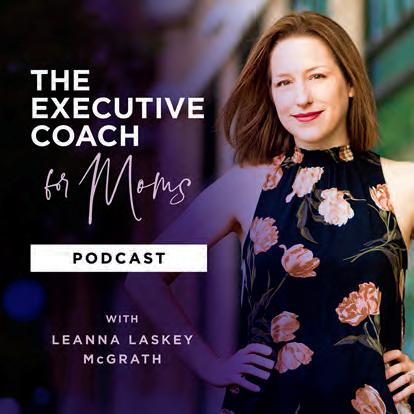
2. Embracing motherhood as a superpower, providing clarity and focus.
3. Reframing strength and resilience as adaptability, not just endurance.
4. Leading with values, innovation and intentional action.
5. Using reflection and intentionality as tools for aligned decision-making.
6. Overcoming challenges to spark creativity and growth.
Overall, this summer series is a must-listen for anyone navigating career, parenthood or personal growth. It’s a reminder that success, strength and leadership are deeply personal, and that intentional choices—guided by values, reflection and adaptability—can create meaningful, fulfilling lives. Check out this recap or the full 12-episode series anywhere you listen to podcasts. z
Want to share a business development podcast for me to review? Please send your suggestions to gaby@smihq.org.
High
Corrosion-resistant
Expert
Extensive

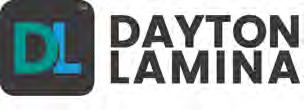
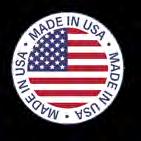
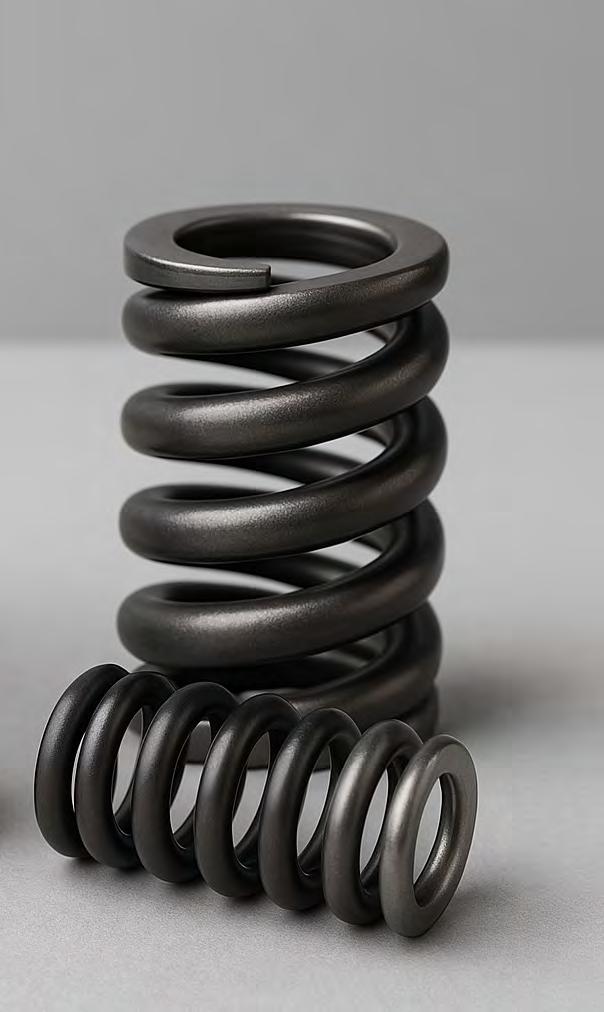




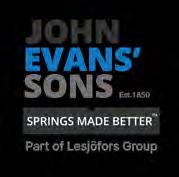















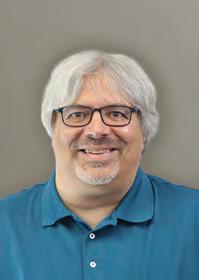
Reviewed by Phil Sasso
In the fall, I like to reread a classic personal development or business book. This year, I chose an older book I hadn’t read before: “Switch: How to Change Things When Change is Hard.”
“Switch” is Chip and Dan Heath’s 2010 follow-up to their 2007 bestseller “Made to Stick.” In it, the brothers explore why change is so hard and offer a practical framework for personal, organizational and cultural transformation.
To describe the tension of change, the Heaths use a word picture of a rider on an elephant taken from Jonathon Haidt’s “The Happiness Hypothesis.” The rider is our rational side, analyzing, strategizing and planning. The elephant is our more powerful emotional side, seeking immediate gratification and comfort. Although the rider may have a clear roadmap, if the elephant isn't motivated, the rider’s willpower will eventually be exhausted and the elephant will win. To successfully implement change, the authors believe you must appeal to both the rider and the elephant, while also addressing a third element, the path (environment).
Intention
Two examples of intentionality and change seem most relatable to springmakers.
Scenario One: You’re a foreman trying to keep your team safe on a machine. You could appeal to the rider with a warning sign. Or you can reach the elephant by showing a gory video of someone getting injured. But, in this case, focusing on the path eliminated the problem entirely.
A machine was designed so “it can be activated only if two buttons are pressed at the same time,” the authors write. “The buttons are positioned so that to press both of them, you must place your arms high and wide (like the “Y” in the “YMCA” dance) …Poof — you have made a dangerous behavior impossible.”
We can’t always eliminate risk. But there are other ways to harness the rider and the elephant.
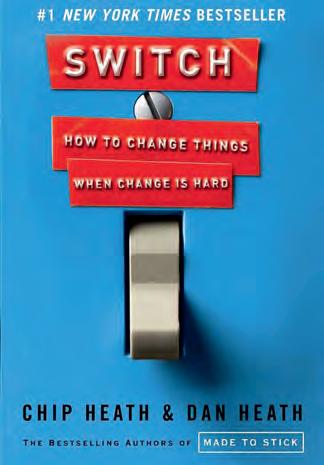
Scenario Two: A General Motors manager found the old safety policy was ineffective because it was complex and felt nerdy. She simplified the safety policy to require goggles and protective side shields for everyone inside the blue lines on the shop floor (rider). She introduced stylish safety goggles that looked like something Bono would wear (elephant). And she used positive peer pressure to get everyone into the new habit (path). The result? Plant injuries dropped 21%.
I liked the book. The rider, elephant and path are a memorable mnemonic device.
But perhaps I didn’t finish the book the first time because it tries to cover too much ground and has too many stories. To use their analogy, the Heaths should have chosen one path: Is this self-help? Personal development? Management? Psychology?
My takeaway is that genuine change requires harnessing our analytical mind, our human nature and our environment to focus on achieving the desired outcome. z
Have a favorite business book you would like us to review? Email your suggestion to phil@smihq.org.
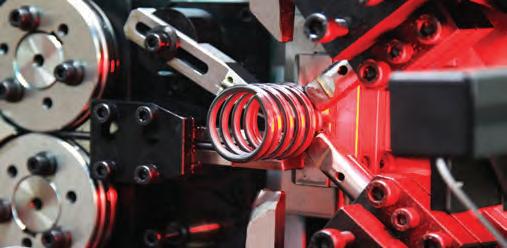

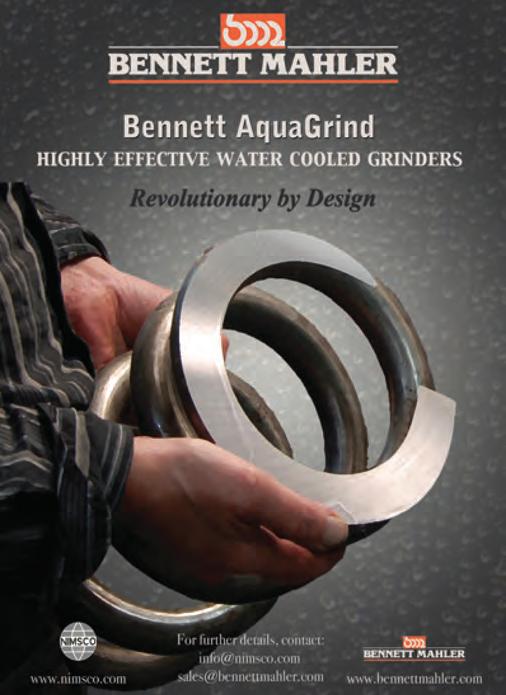
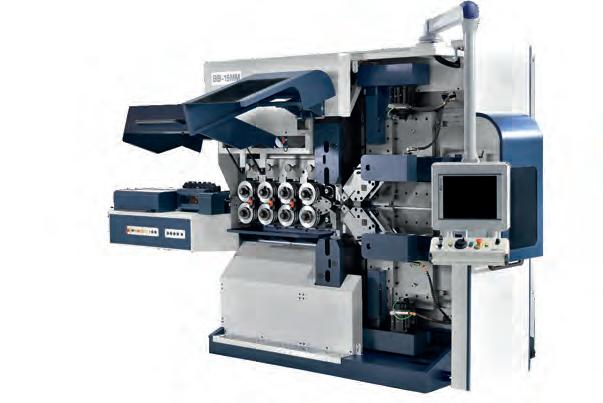
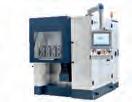



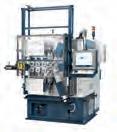

Forming Systems Inc. has added the HCF-SE5 and HCF-AL furnaces to its HSI energy-saving series. The HCF-SE5 saves up to 15% in energy costs through extra insulation jackets, energy-efficient retention design and optimized insulation construction. The HCF-AL furnace features an intelligent energy control (algorithm) that reduces energy consumption by up to 20% or more.
For more information, contact Forming Systems, Inc. at info@formingsystemsinc. com or call 269-679-3557.
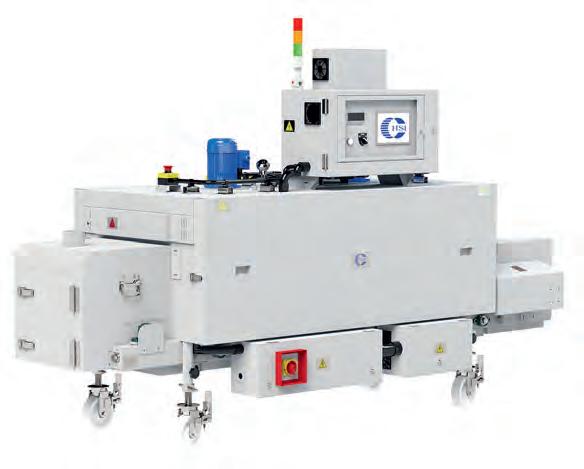
INMATEC Gase Technologie introduces the INMATEC Duo, a combination PNK nitrogen generator and H2KAT hydrogen catalytic converter for more precise laser cutting.
The combination nitrogen generator and hydrogen catalytic converter uses a twostage process to generate nitrogen on-site. First, the IMT PM LASER PSA system (pressure swing absorption) filters nitrogen from the surrounding air, then the H2KAT hydrogen catalytic converter removes the residual oxygen by converting it into water vapor. This creates nitrogen with a purity of up to 99.999%–at up to 50% lower energy consumption compared with conventional methods.
For more information, go to www.inmatec.de/en or contact Kevin Miller, Director of Sales, at k.miller@boge.com.

Left: Nitrogen as an inert gas prevents oxidation during laser cutting and ensures clean cutting edges.
Below: The combination of the PNK nitrogen generator and the H2KAT hydrogen catalytic converter produces extremely pure nitrogen for industrial applications such as laser cutting.
(Source: INMATEC)
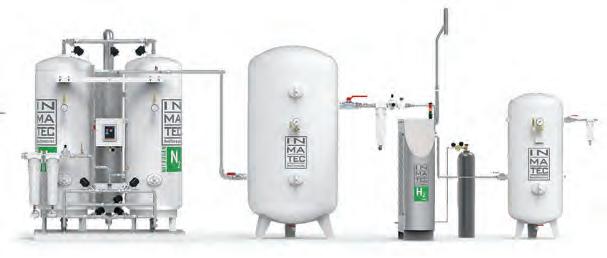
SMI members get priority placement of their product news. News releases should be roughly 50 to 100 words and may be accompanied by color photos (HiRes .JPEG at 300 dpi preferred). Send to gaby@smihq.org.
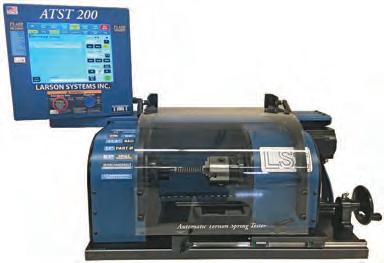

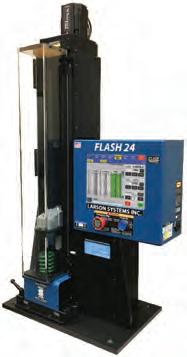
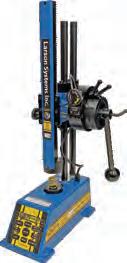
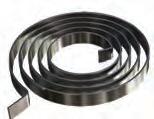


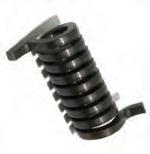
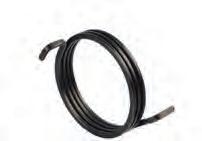





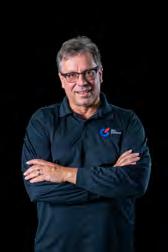




At Admiral Steel, we understand that your product is your reputation. That’s why we take pride in specializing in premium quality high carbon steel that meets specs such as AMS, QQS, and ASTM certified. Our commitment to providing certified material means that you can trust that you are receiving the highest quality steel available. Don’t settle for seconds and rejects. Choose Admiral Steel for the assurance of premium quality steel products. Call us at 800-323-7055 or email sales@admiralsteel.com
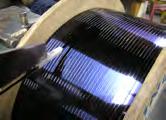
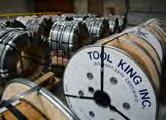
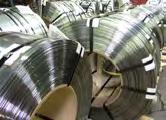

Your source for the best in close tolerance strip and edged products.
strip: cold rolled high carbon/pre-tempered spring steels, coated, low carbon stainless, copper based alloys and aluminum ultra-narrow width, close-tolerance slitting edging: round, square, semi-round, deburred, custom, etc.
oscillate (traverse) and ribbon wound coils
ISO 9001: 2015 certified 43 years servicing the industry
tel. 847.537.2881

Name: Bob Swanson.
Company name and city: United Wire Co., Inc., North Haven, Connecticut.
A brief history of your company: My grandfather founded a wire business in the 1970s, partnering with others to build rolling mills that manufactured shaped wire. He always dreamed of owning his own company and loved the business of producing wire. In 1994, he started United Wire. Two of my brothers and two cousins work in the business, and recently, a fourth-generation family member, my cousin’s son, joined the company.
Job title: President.
Spring industry affiliations: Memberships in CASMI, SMI, WCSMA, PMA and NESMA, where I also served as a past board member.
Nickname: Swanny.
Birthplace and current home: Branford, Connecticut.
Family: My fiancée, Michelle, and our two dogs, Brady and Blitz.
Favorite food: Mexican.
Favorite books/authors: The Bible.
Favorite songs/musicians: Jerry Garcia.
Hobbies: I love to golf and ski. I recently tried heliskiing in Canada — which was a real rush.
Favorite places: Puerto Rico, where I met Michelle and got baptized during a missions trip.
Podcast you’re listening to: Pastor Rick’s Daily Hope.
What’s on your bucket list: A safari in Africa. Aside from necessities, what is one thing you could not go without: The gym.
The one thing I can’t stand is: Procrastination.
My most outstanding qualities: I’m hardworking and have strong leadership skills.
People who knew me in school thought I was: Funny. Believe it or not, I also had dreadlocks in college.
I knew I was an “adult” when: I became president of United Wire at 27. I had to grow up fast.
If I weren’t working at my company, I would like to: Work as an underwear model.
The most difficult business decision I ever had to make was: The actions I had to take during the 2008 financial crisis to keep the business afloat. I wonder what would have happened if I’d never gone to work for the family business.
My role model(s): My grandfather. I looked up to him so much. He had many admirable qualities.
I’d like to be remembered in the spring industry for: Being a dedicated leader who worked hard and took smart, calculated risks to grow his family’s business and carry its legacy forward. I hope to be remembered not only for delivering high-quality products to the industry but also for building a company that is a trusted partner and enjoyable to work with.
But people will probably remember me for: Being a jokester.
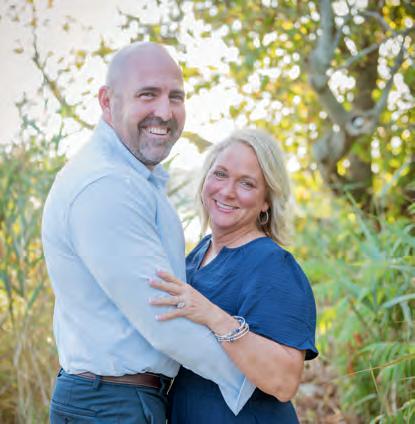









More than just wire & strip. Here’s what’s new:







Springmakers, we’ve got more than just top-tier wire and strip— Gibbs Interwire now offers Shot Peen in Cut and Cast, delivering enhanced durability and performance for your springs. Get the quality, strength, and precision you need—all from your trusted supplier.







Gibbs Interwire is proud to offer the complete Elgiloy Specialty Metals Wire Product line, bringing even more high-performance options to our customers. Your mission-critical applications have never been in better hands.














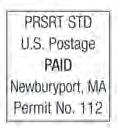

Provide a superior retirement plan, spend less time on plan administration and save money

Our transition to the SMI’s multi-employer plan was smooth and went as promised. We were able to leverage the larger overall plan size to bring our costs down while improving the quality of service our employees receive as preferred customers. Under the SMI umbrella, we keep full control over our plan design while delegating compliance to fiduciary experts.
Alex Melnikow President, CFO Midstate Spring, Inc.
Find out why several SMI members have already enrolled in the program to save money and relieve themselves of administrative burdens when you contact Liz Hickox at Core Financial Partners at 401-236-2350 or email liz@newportcfp.com
